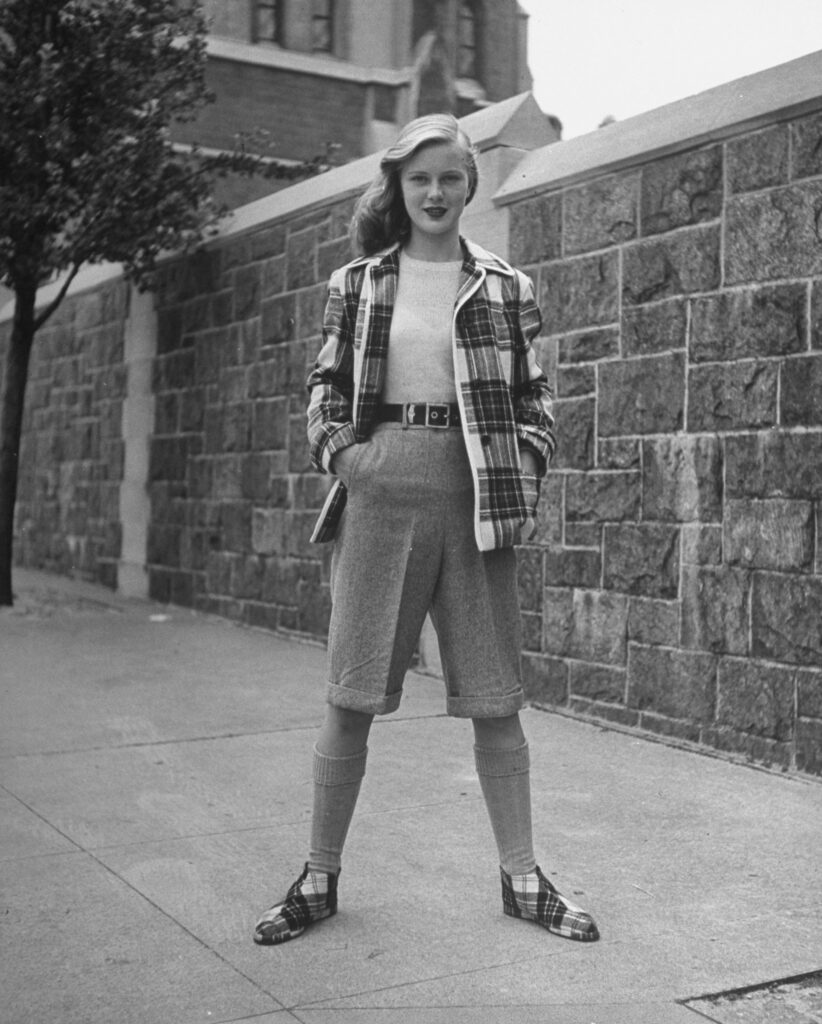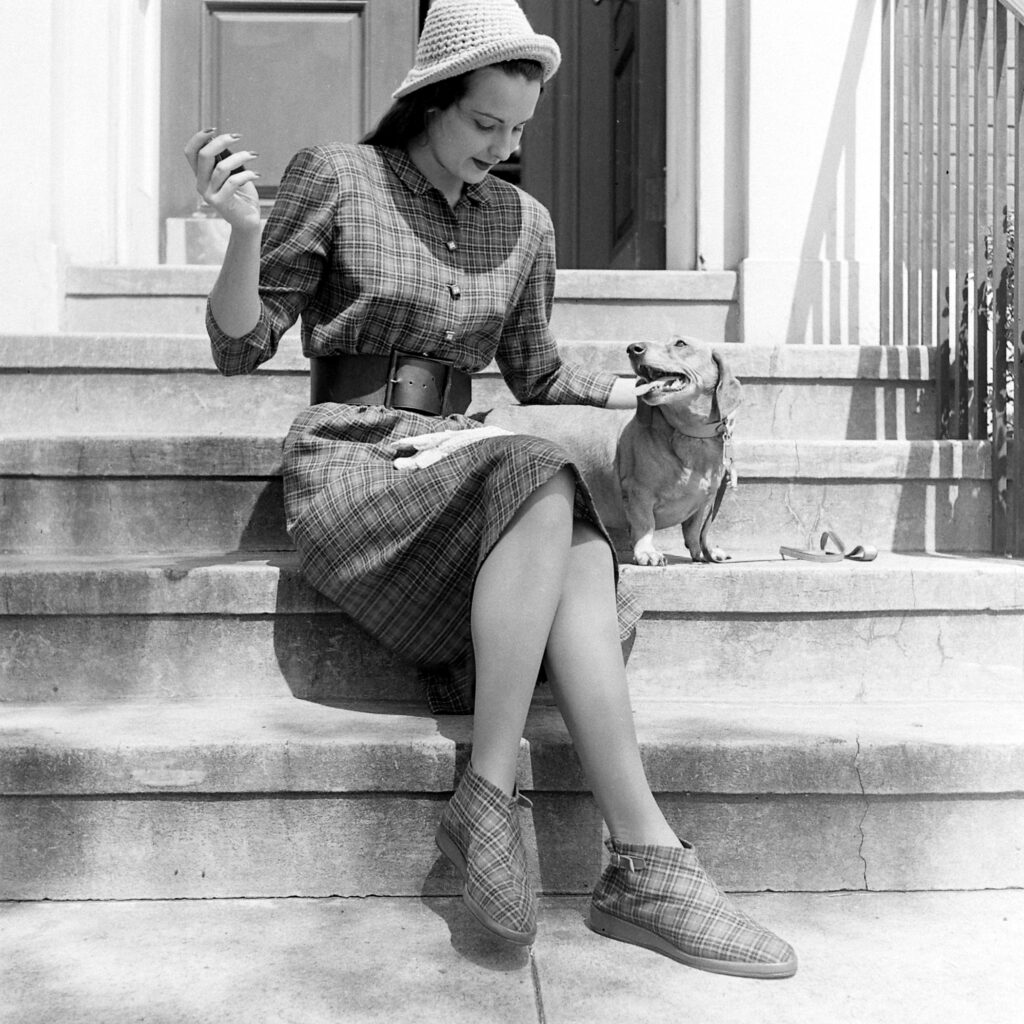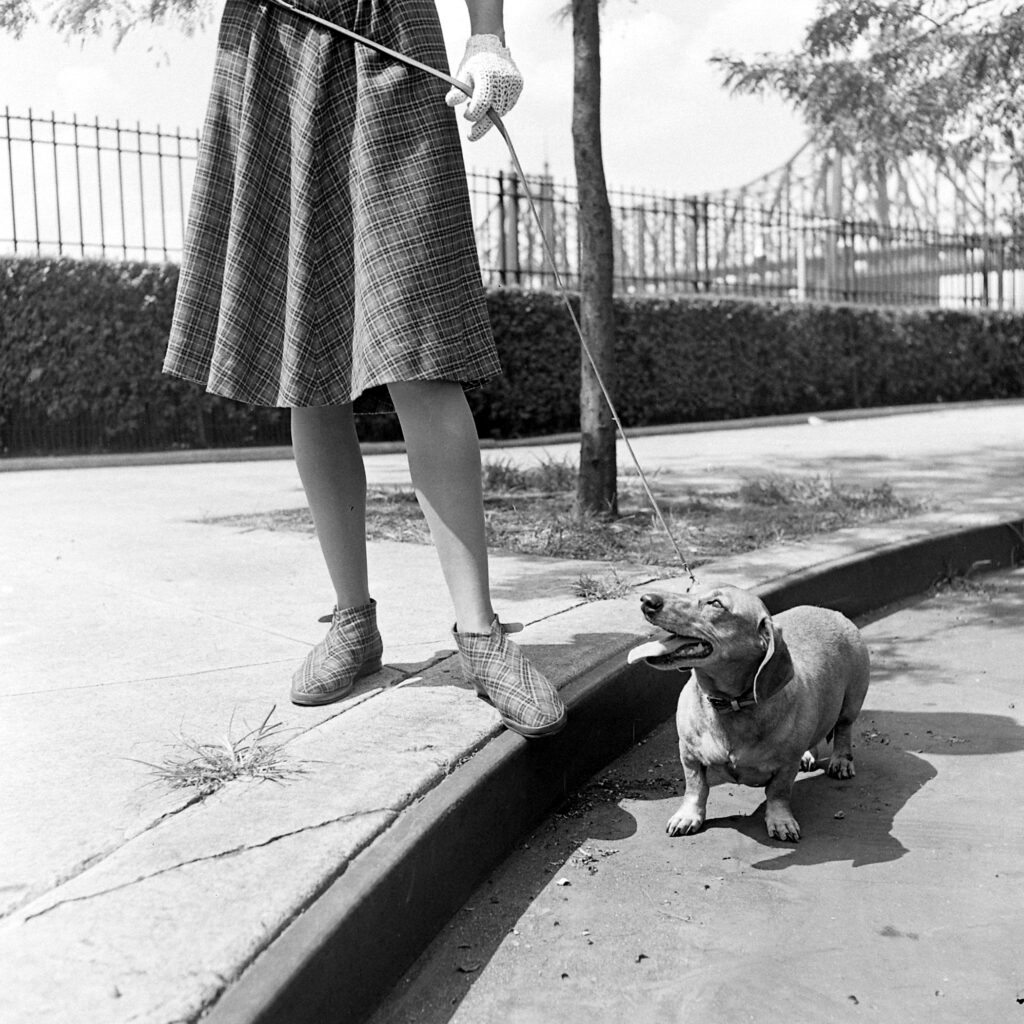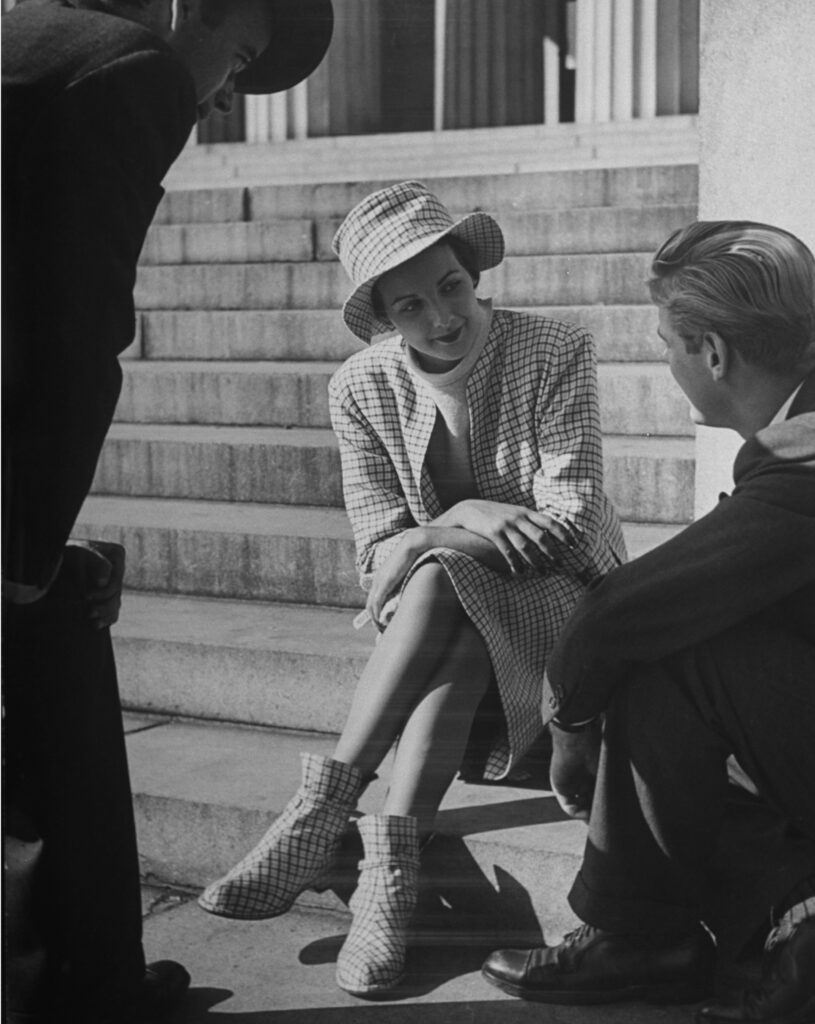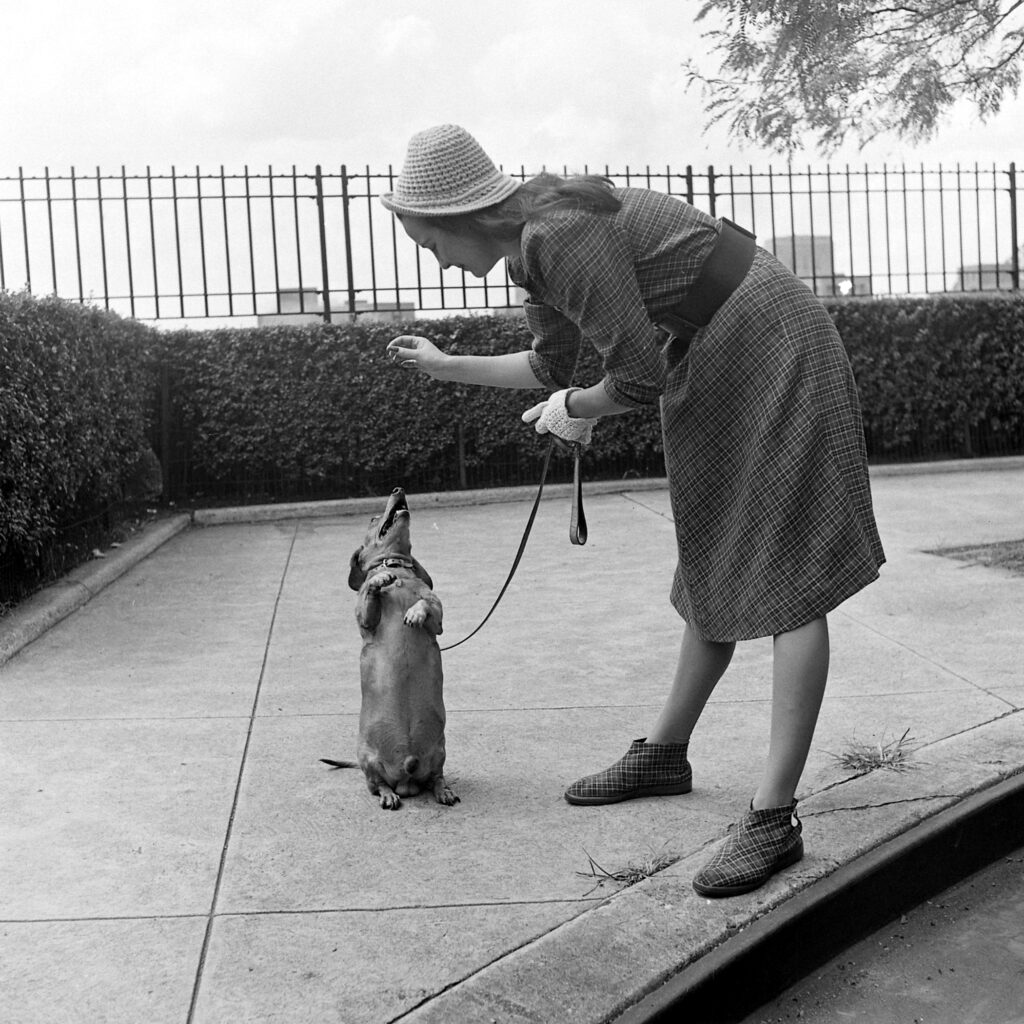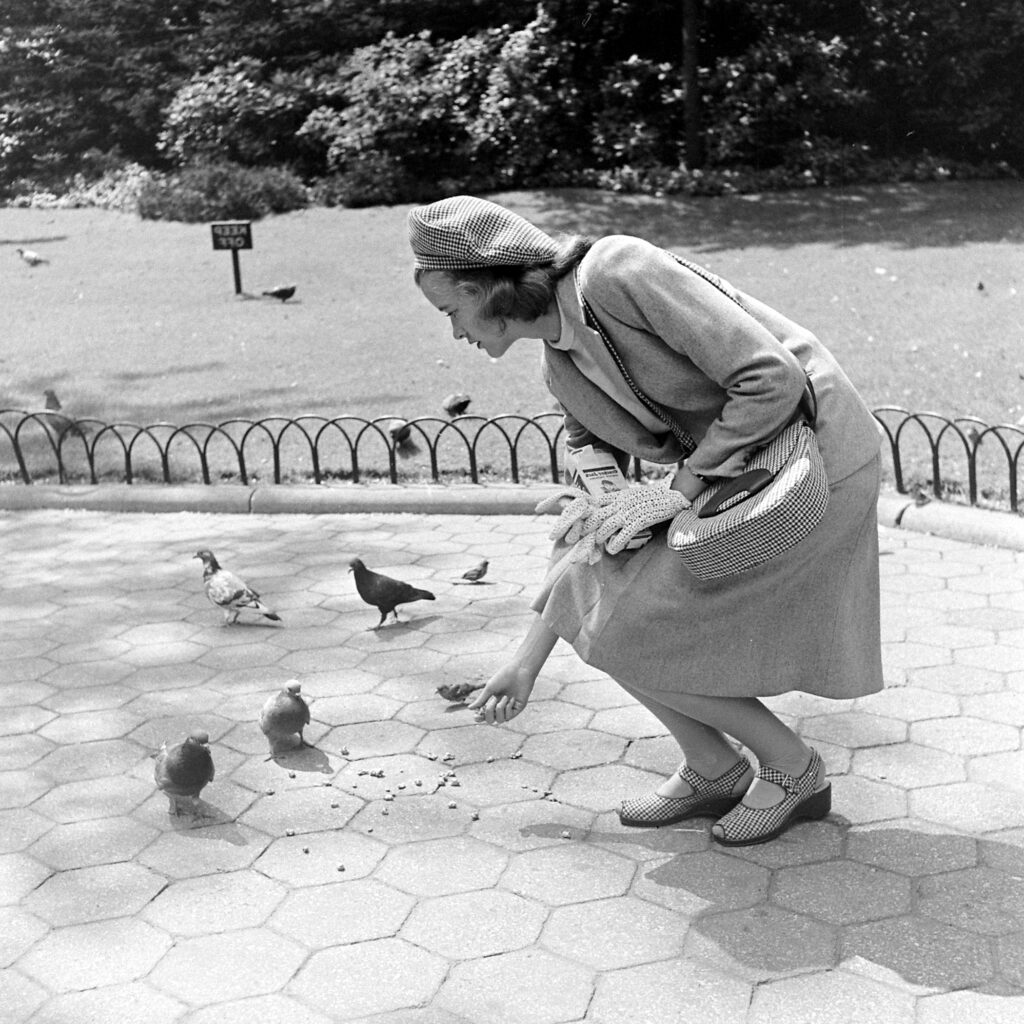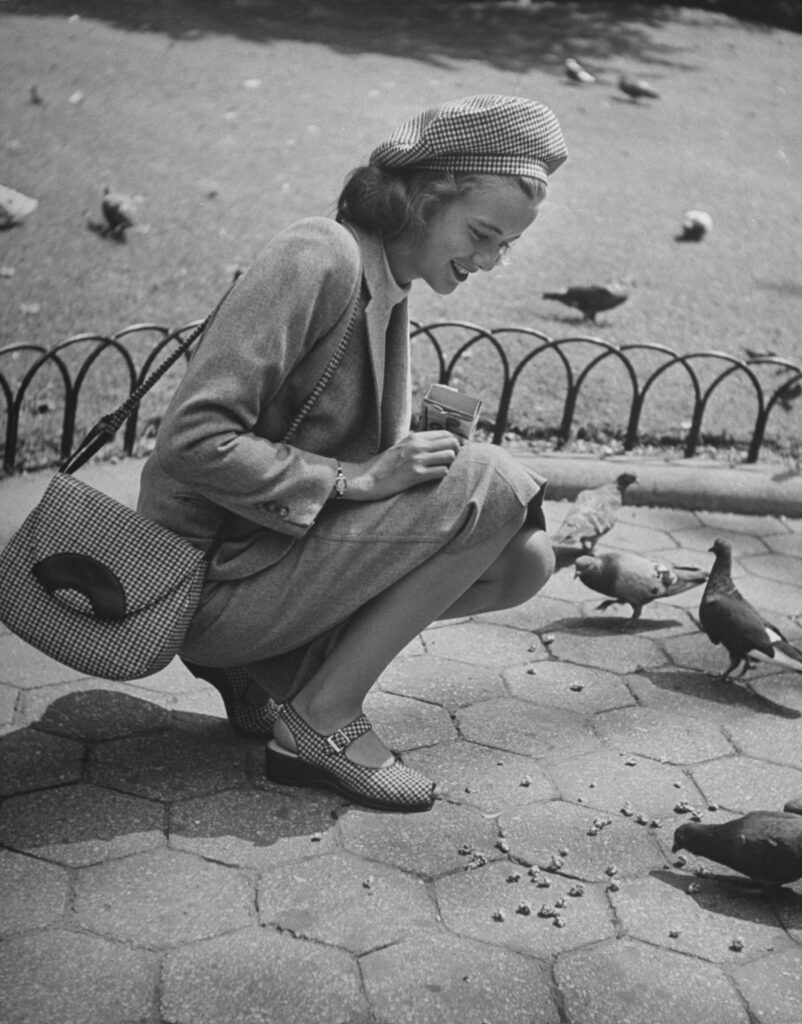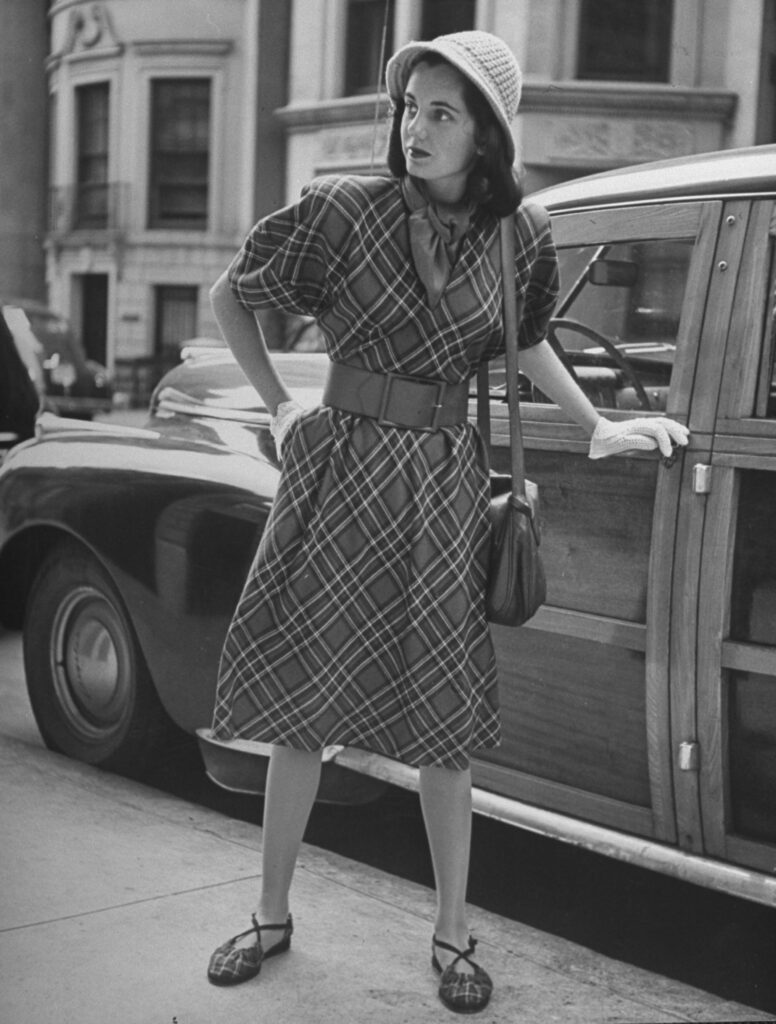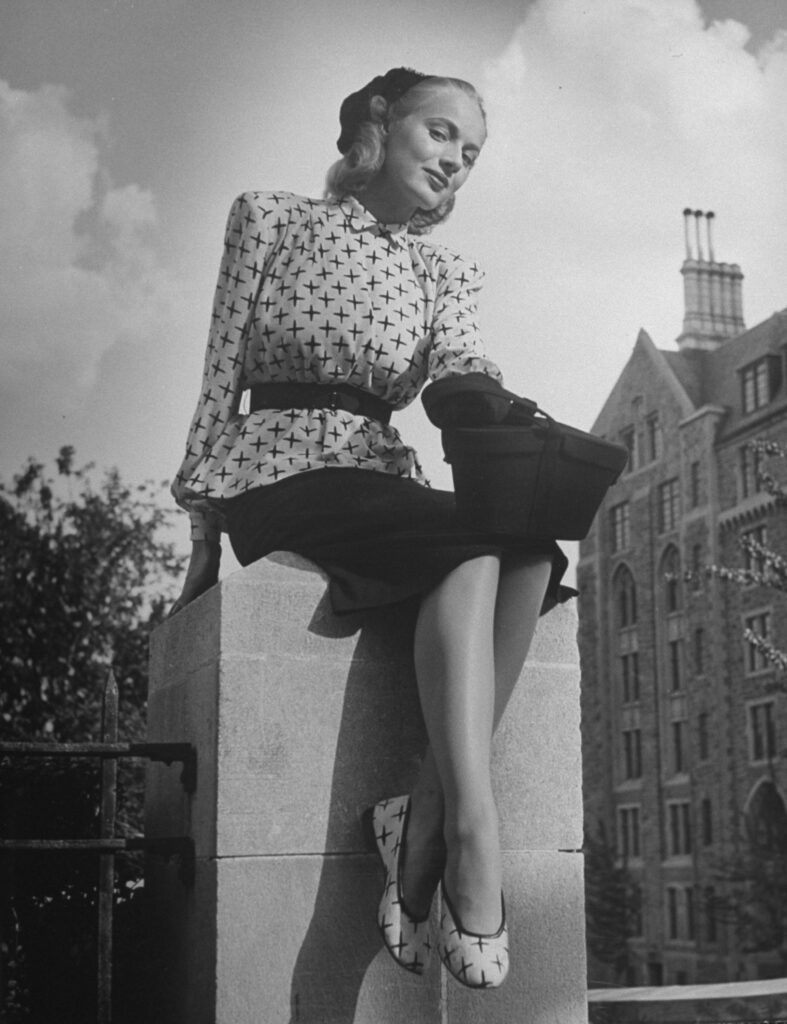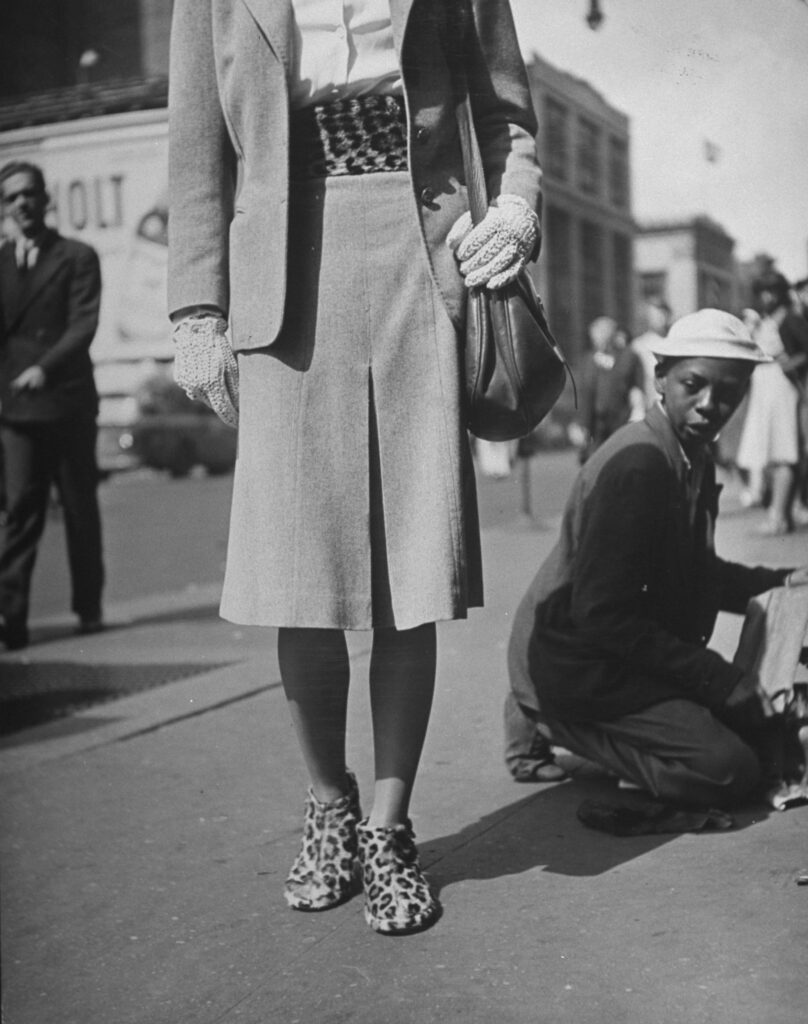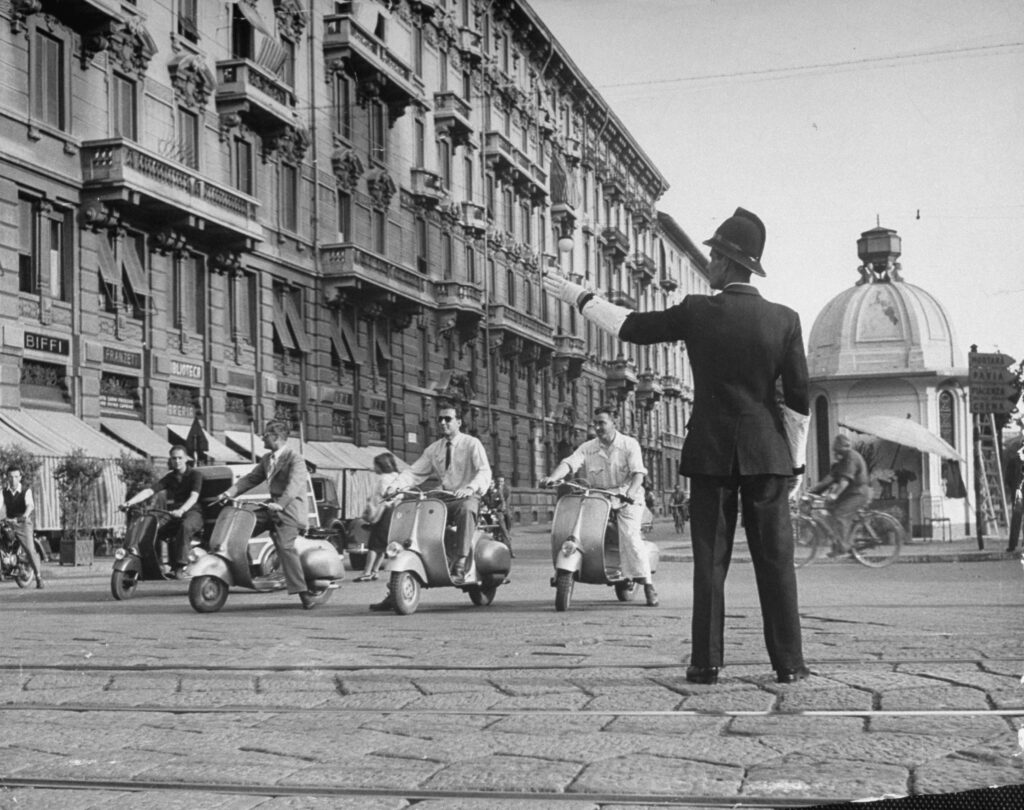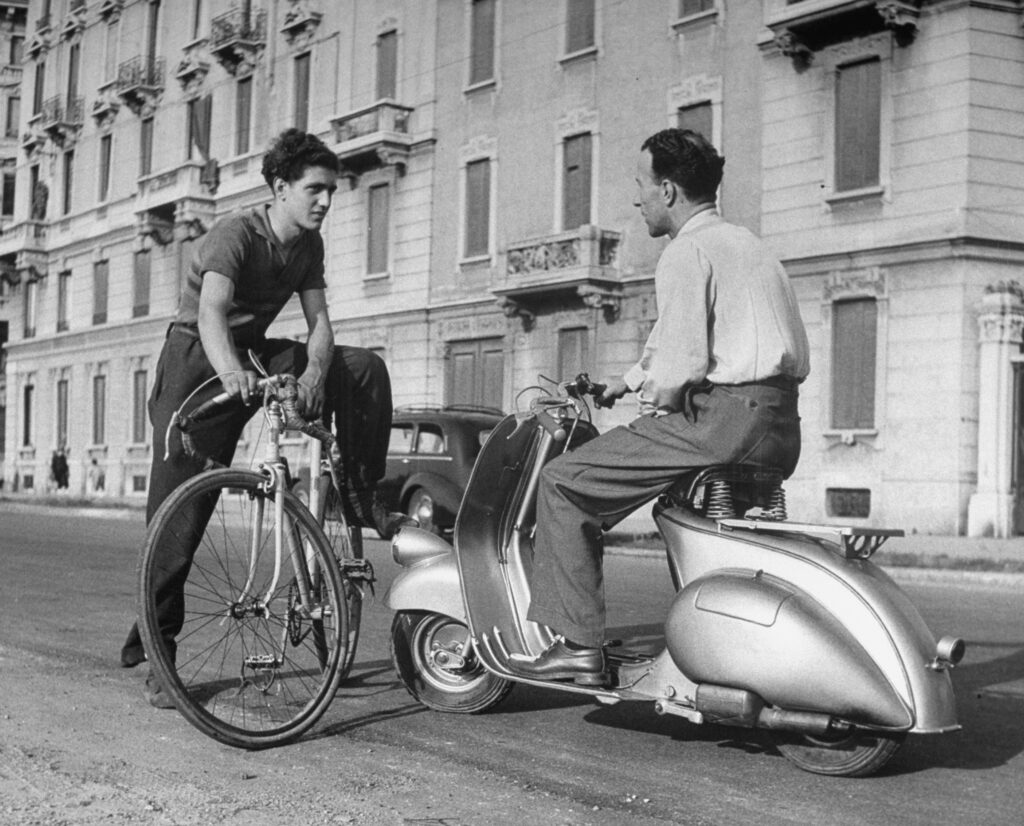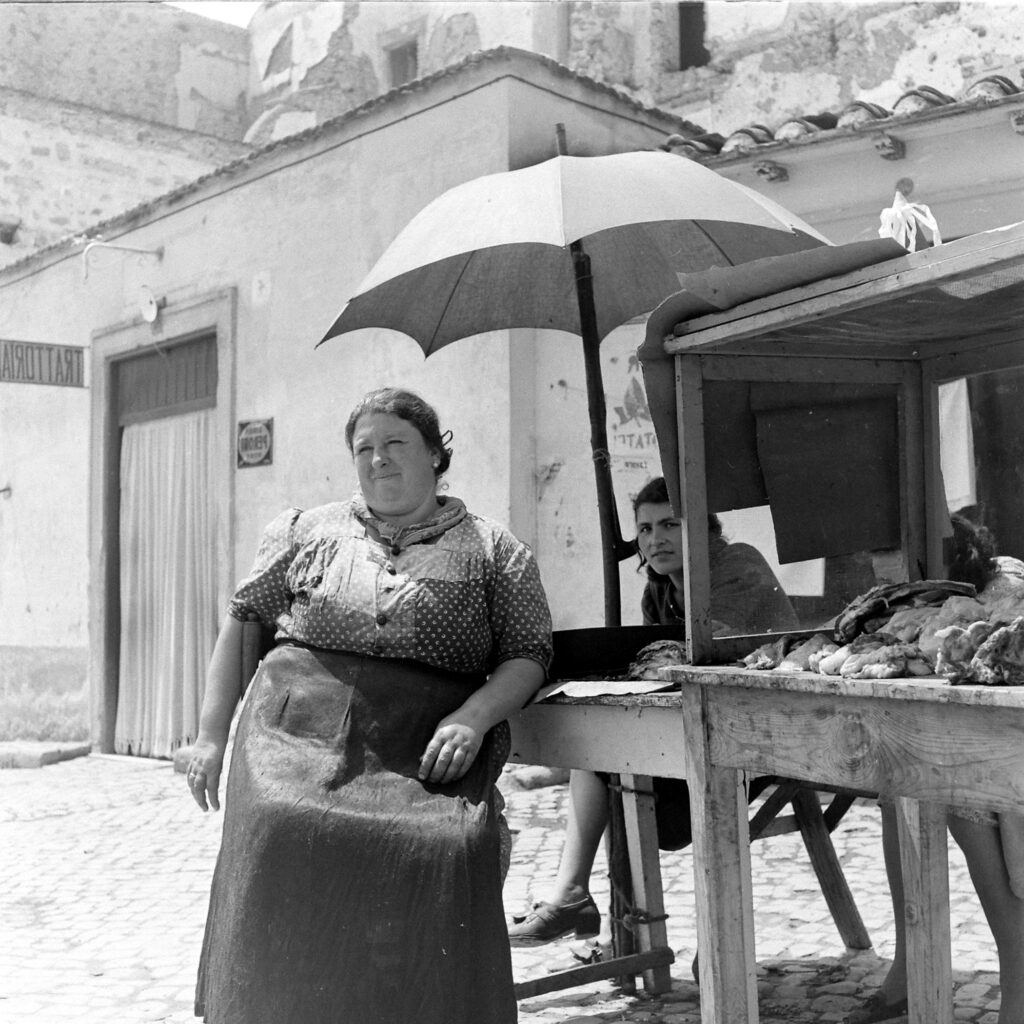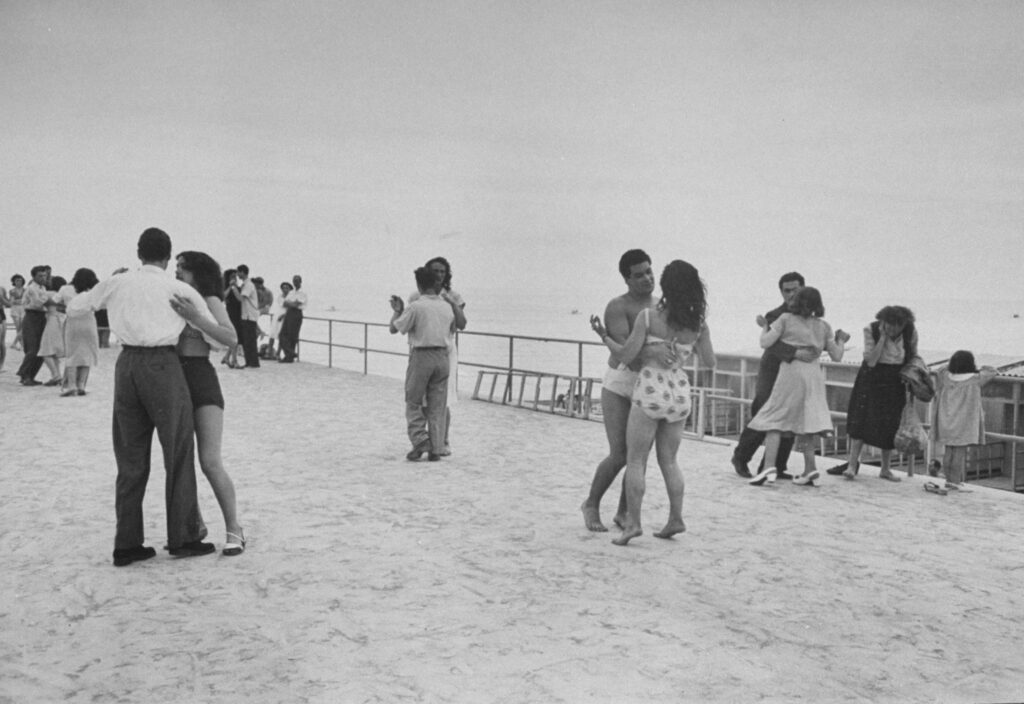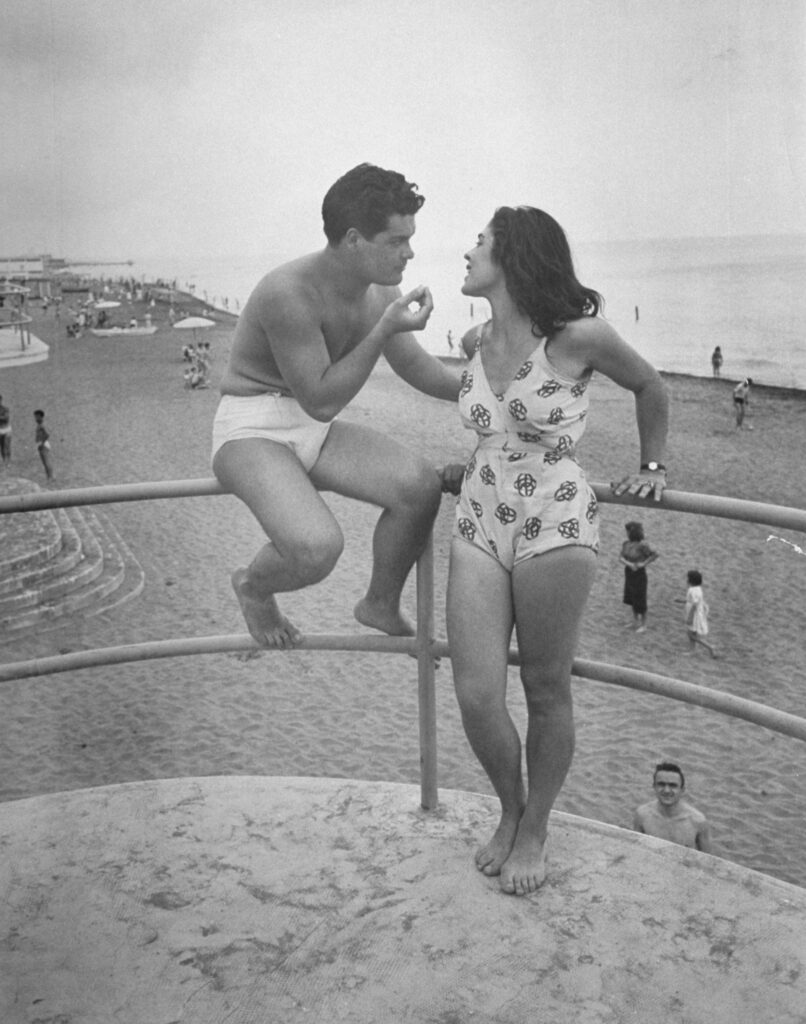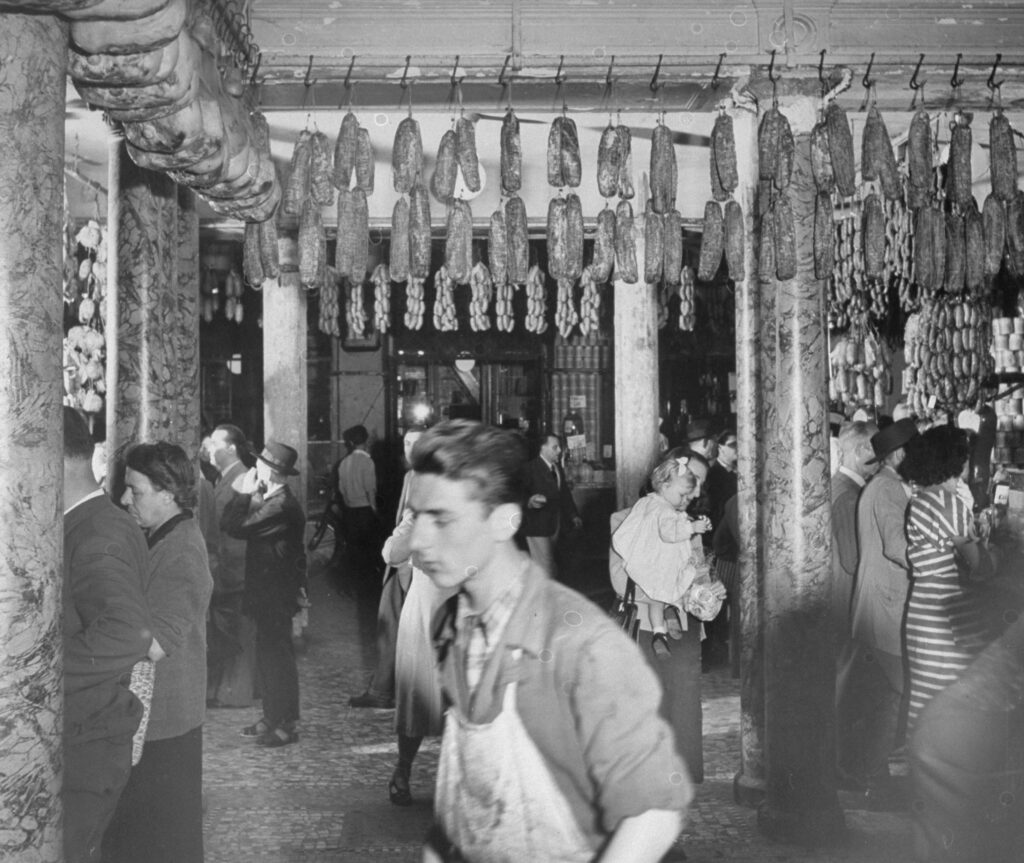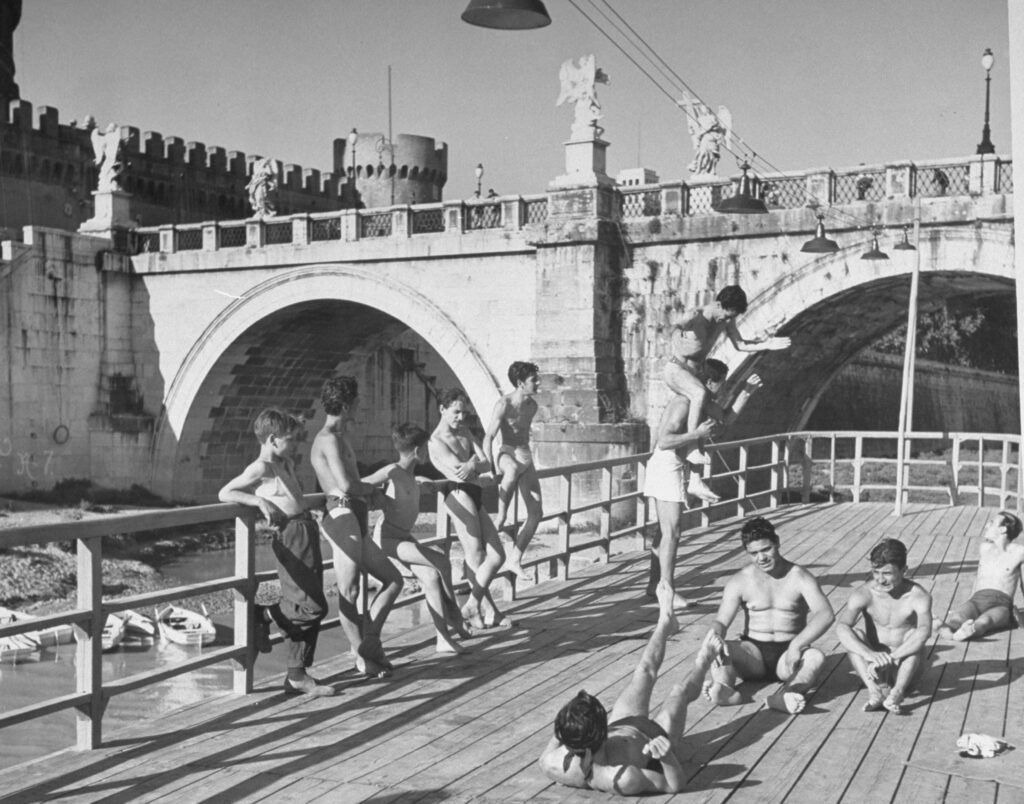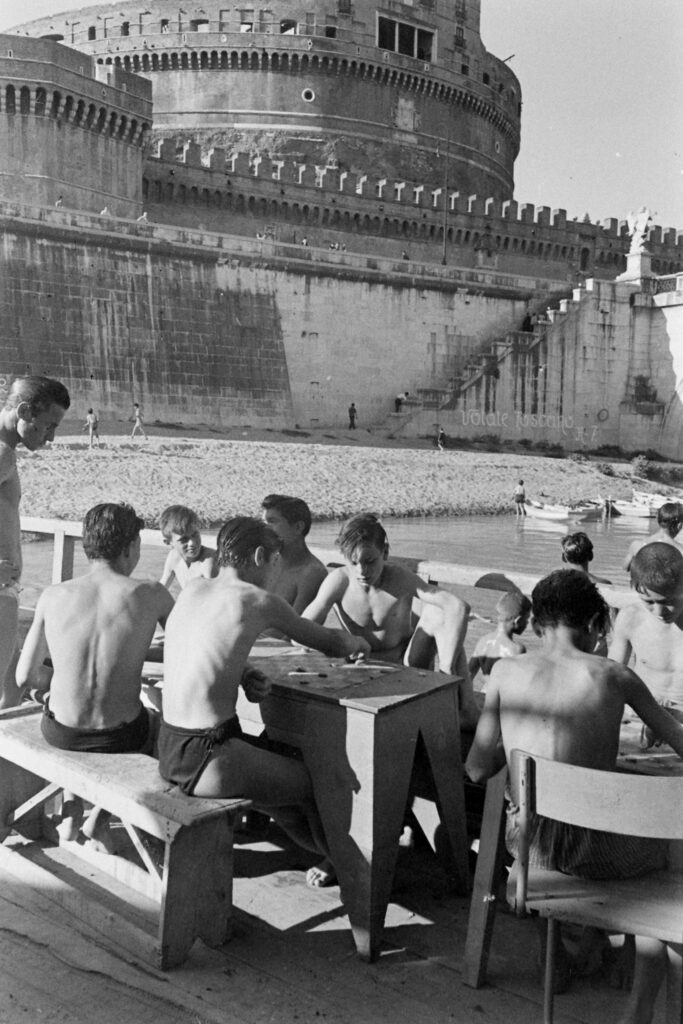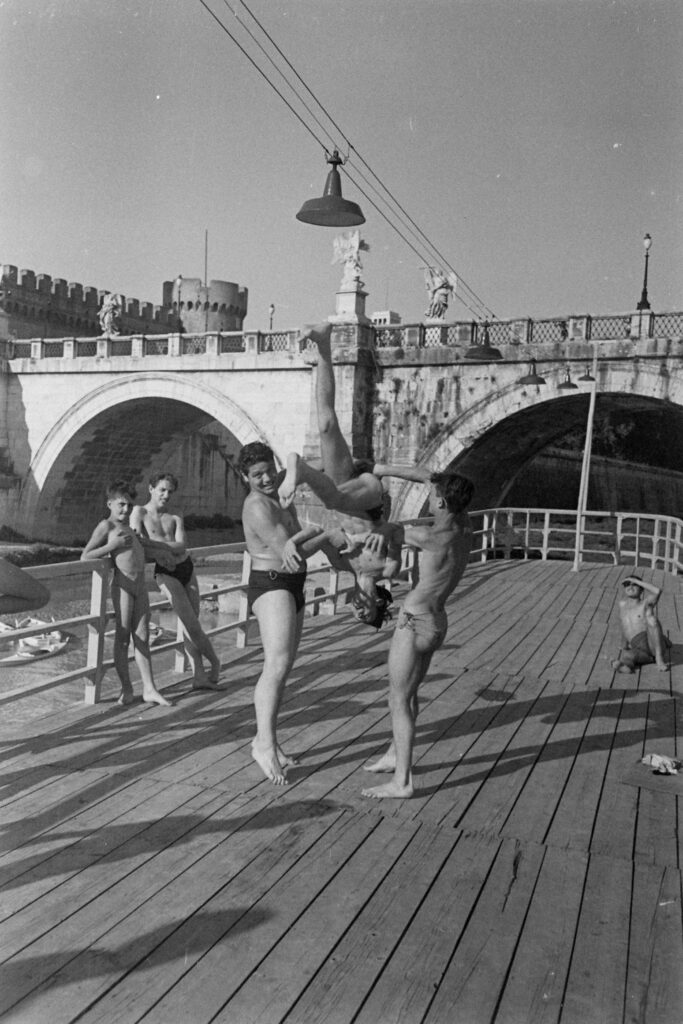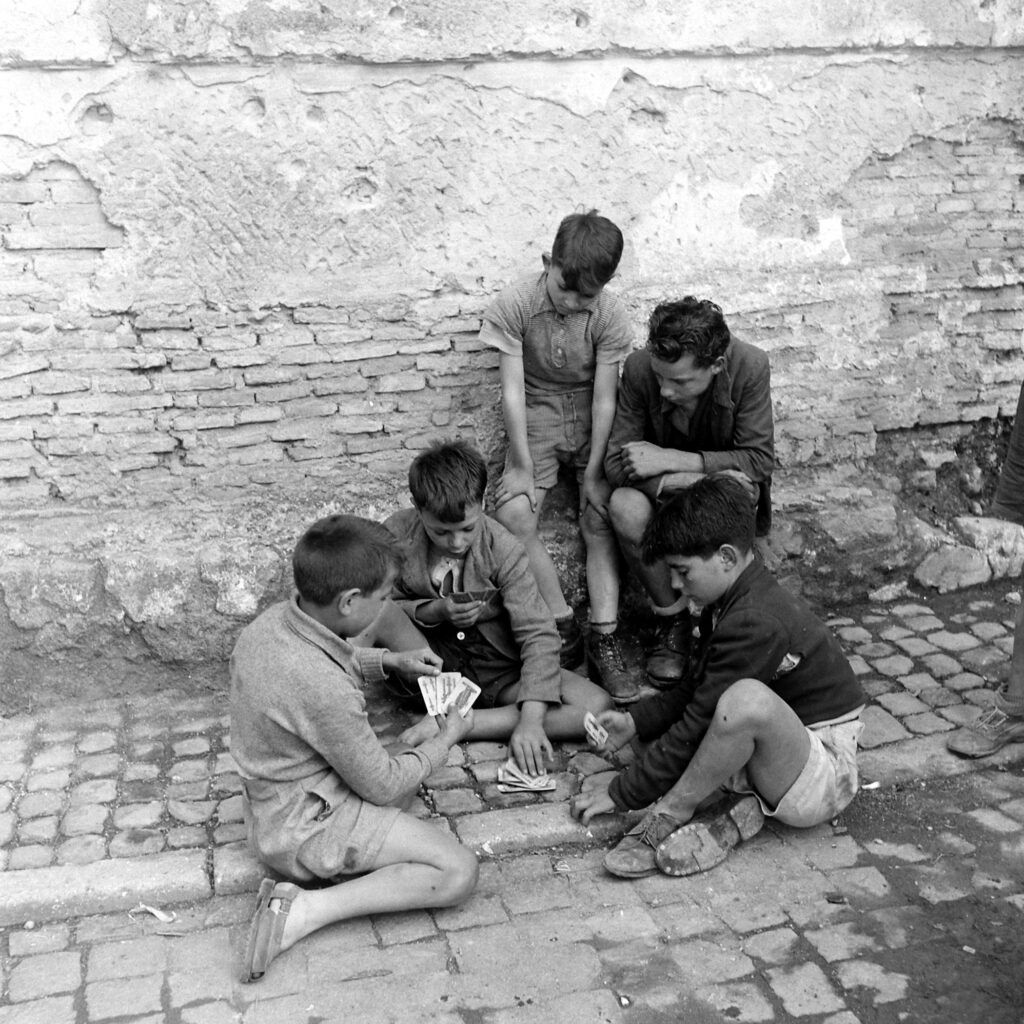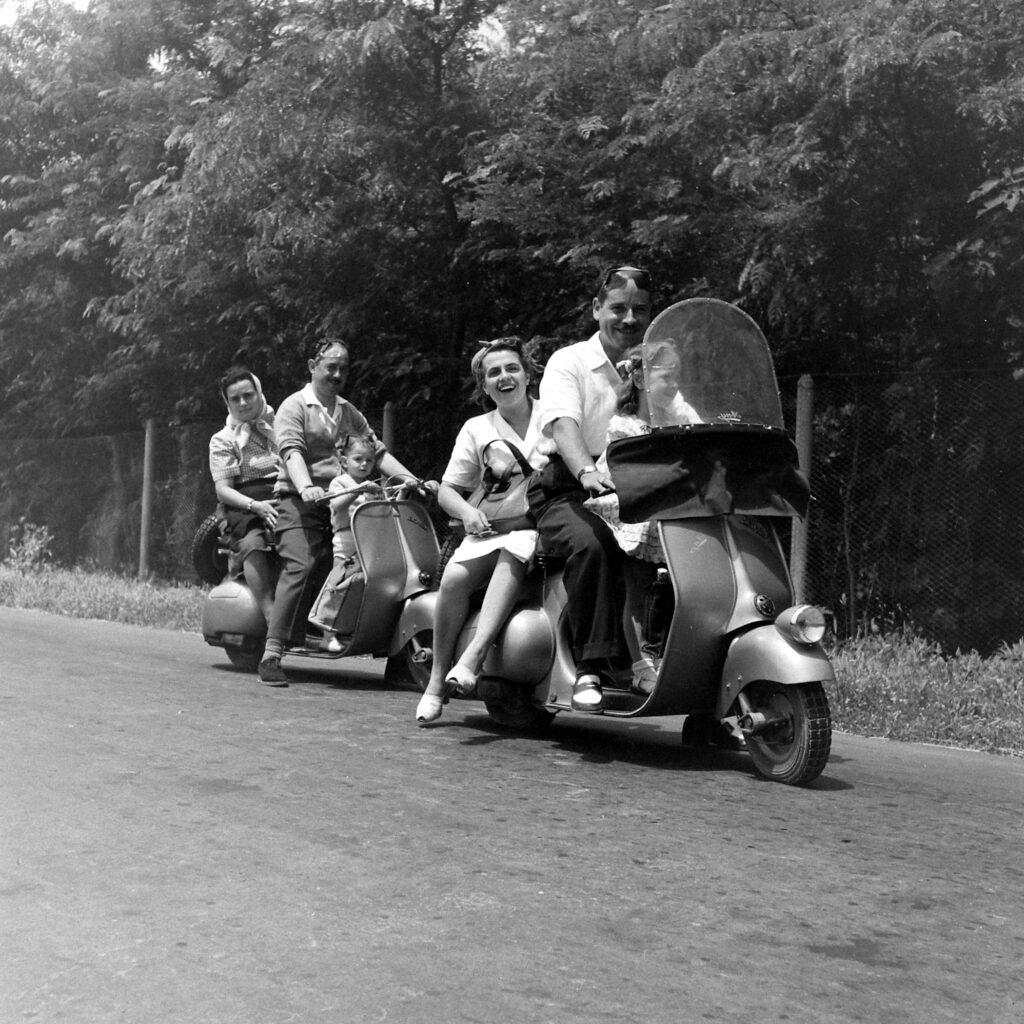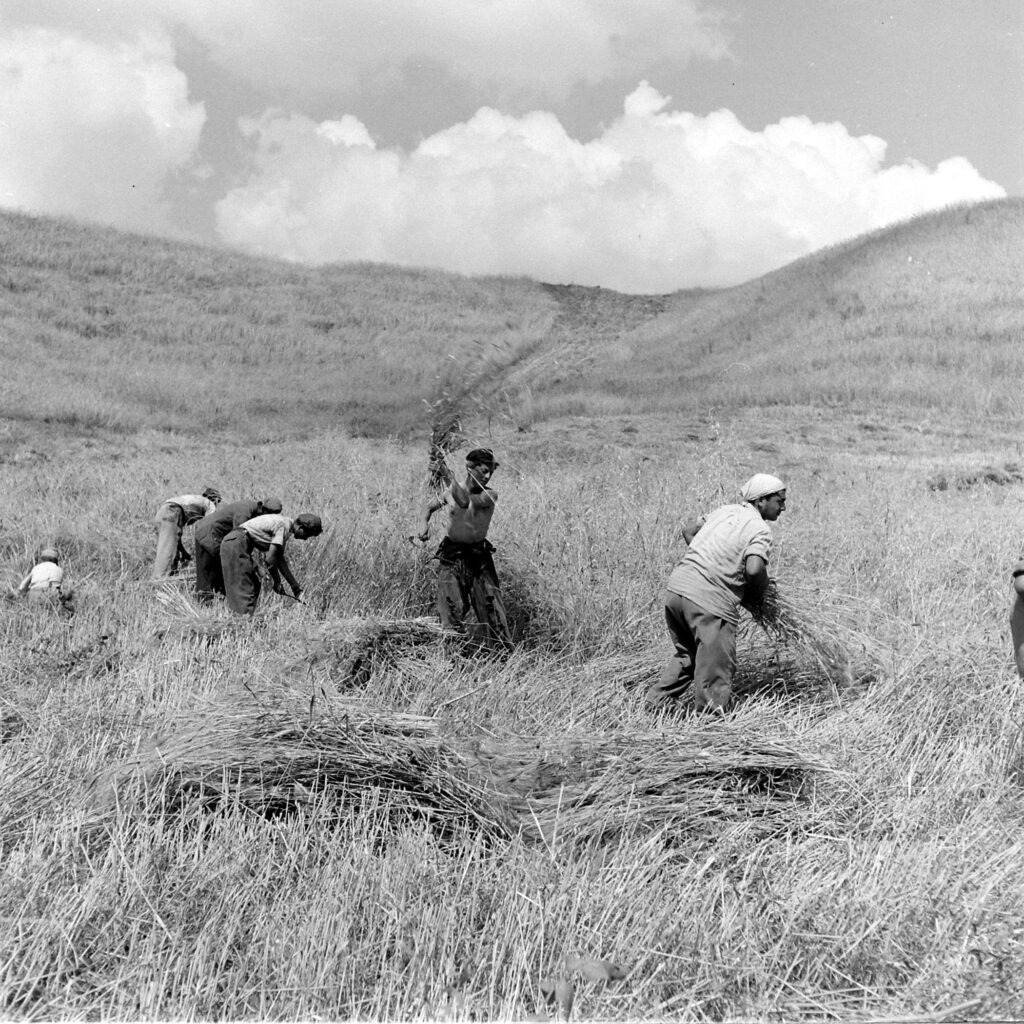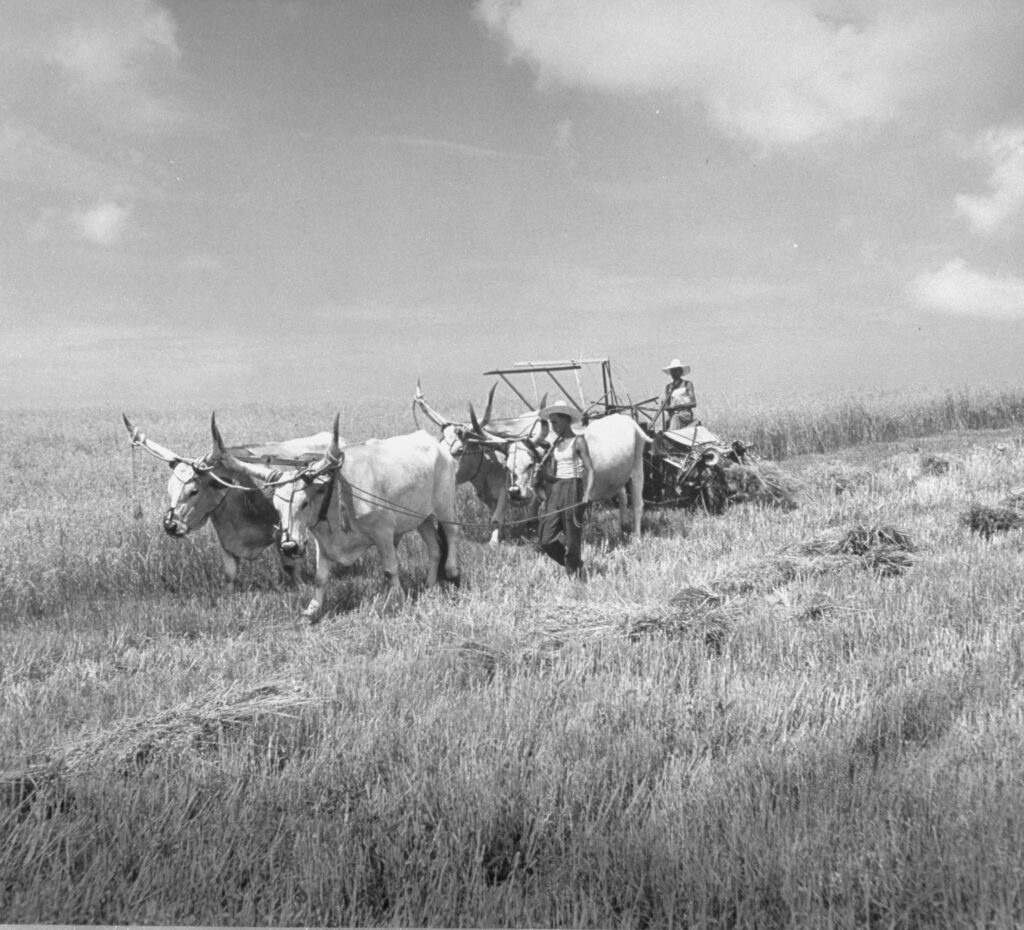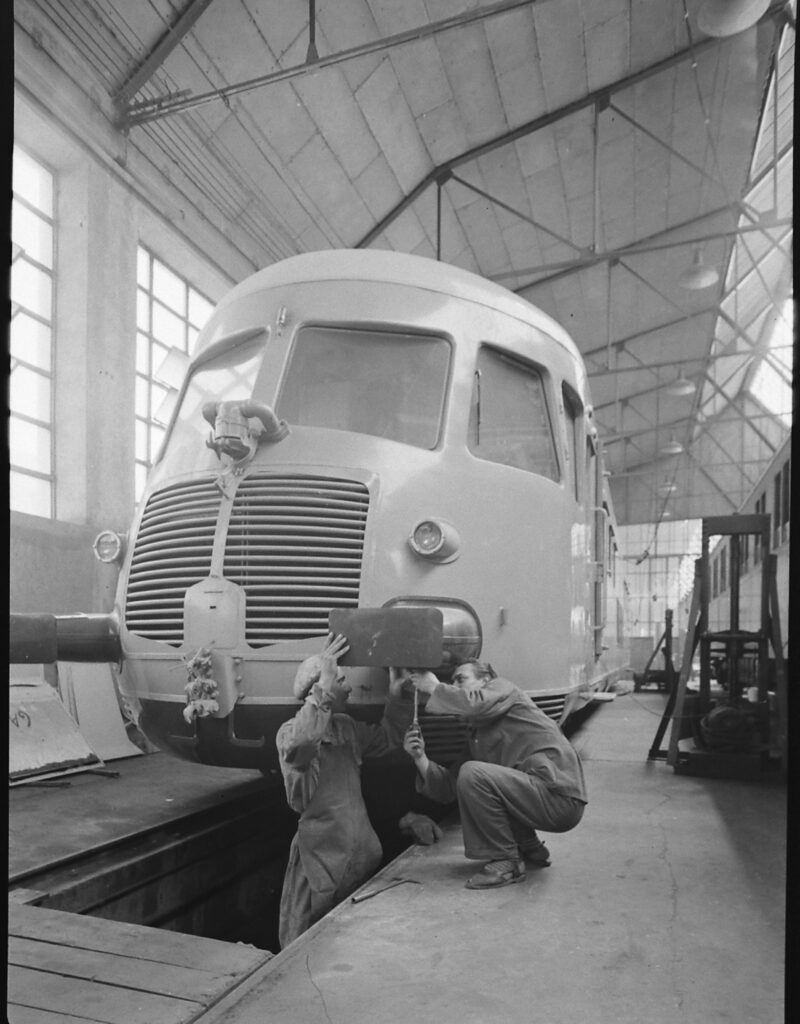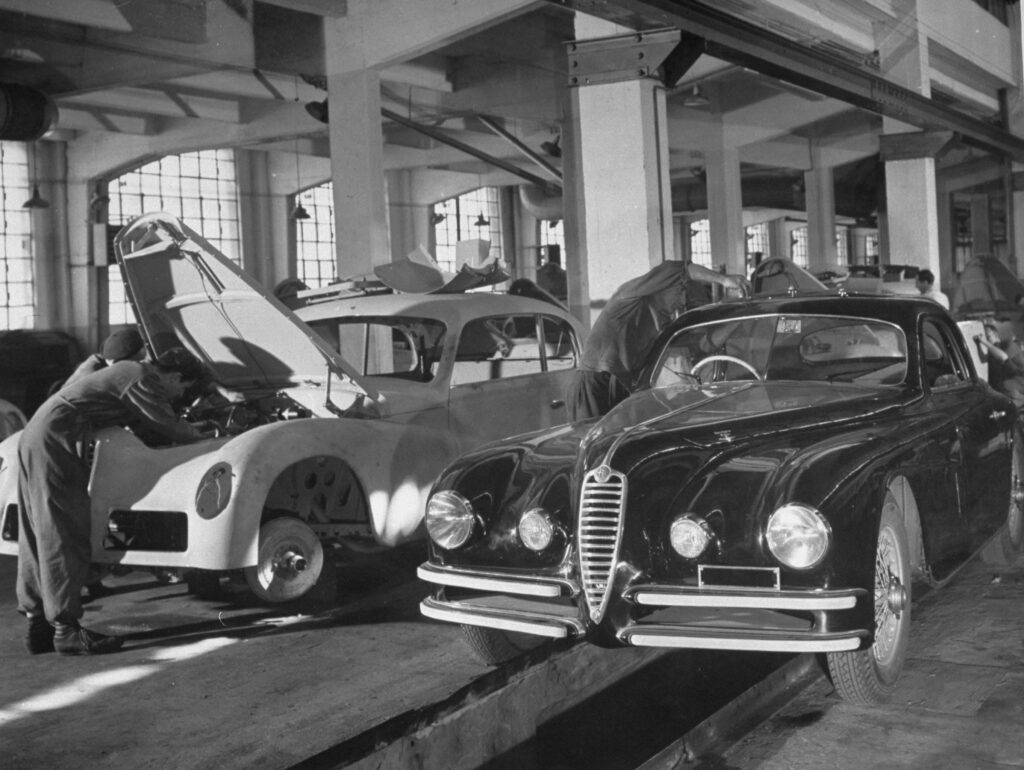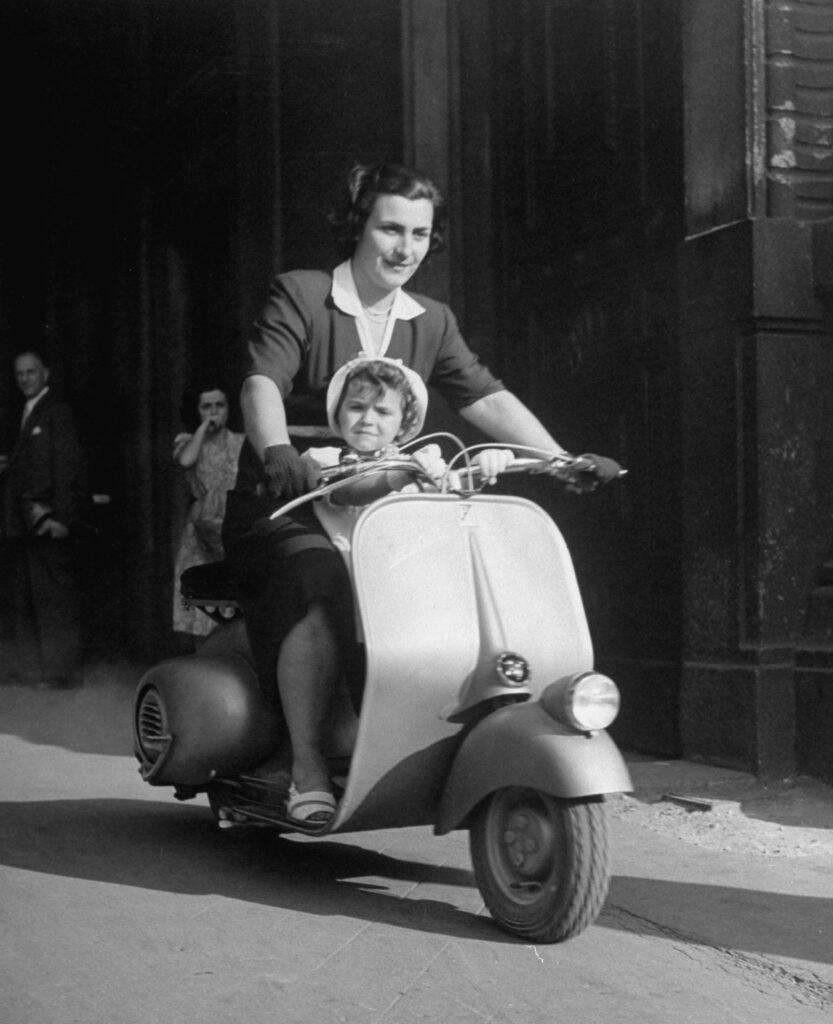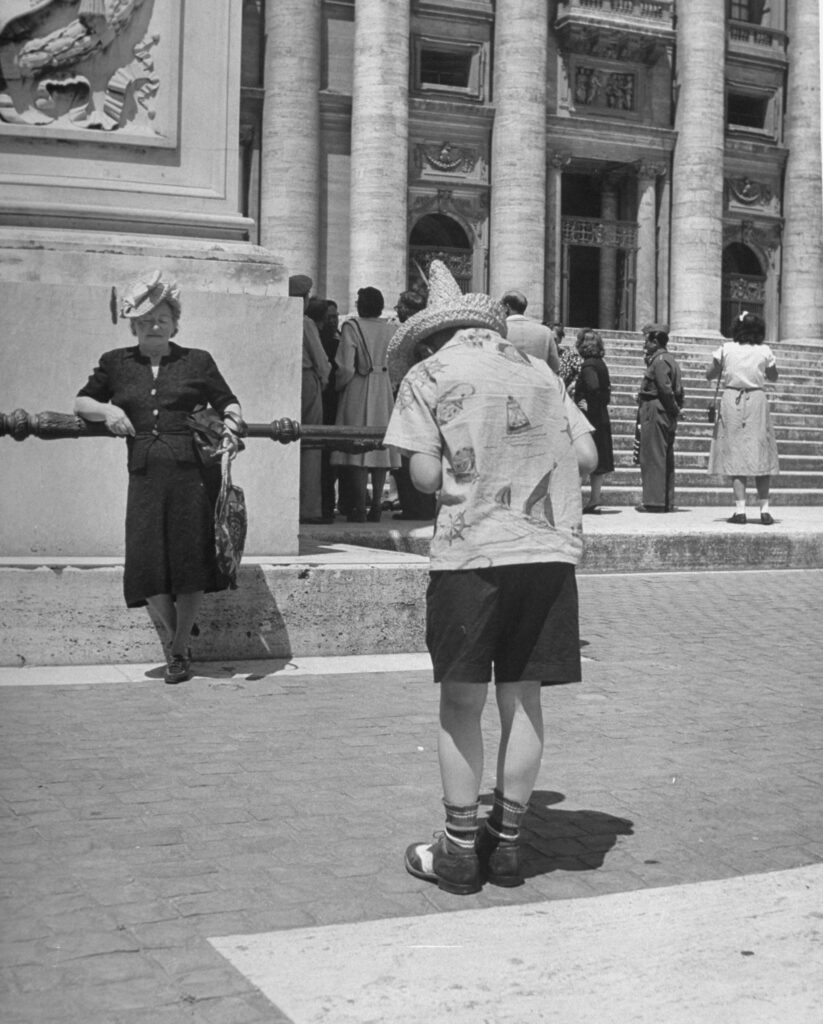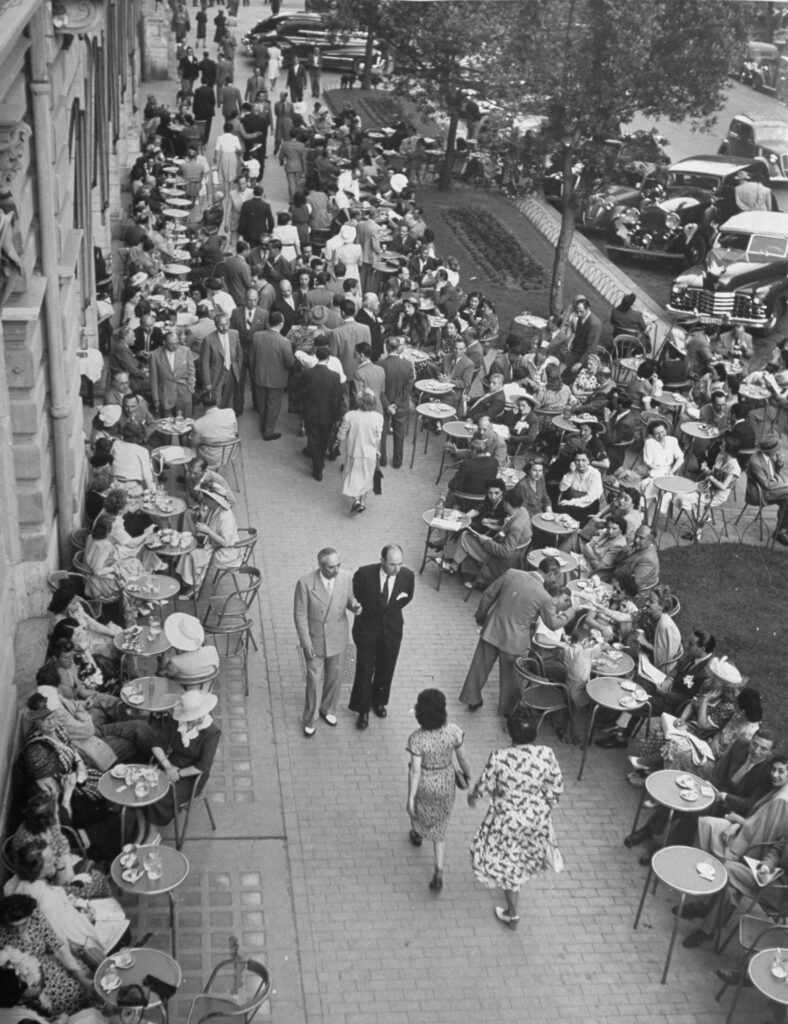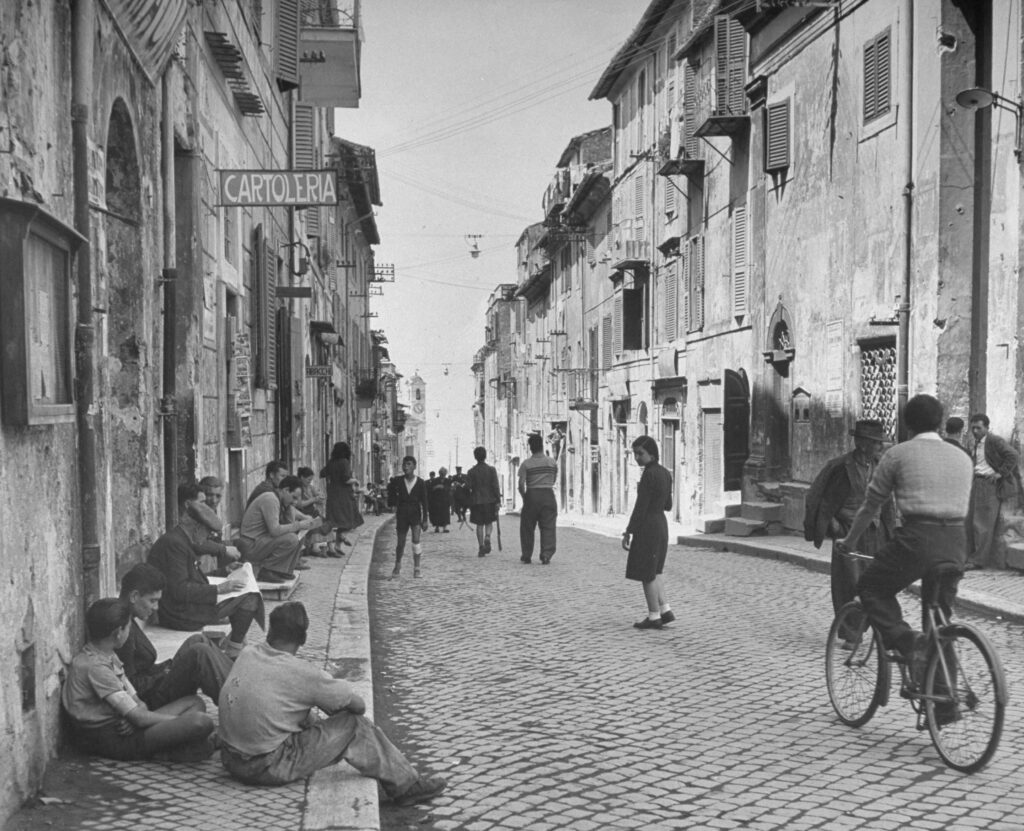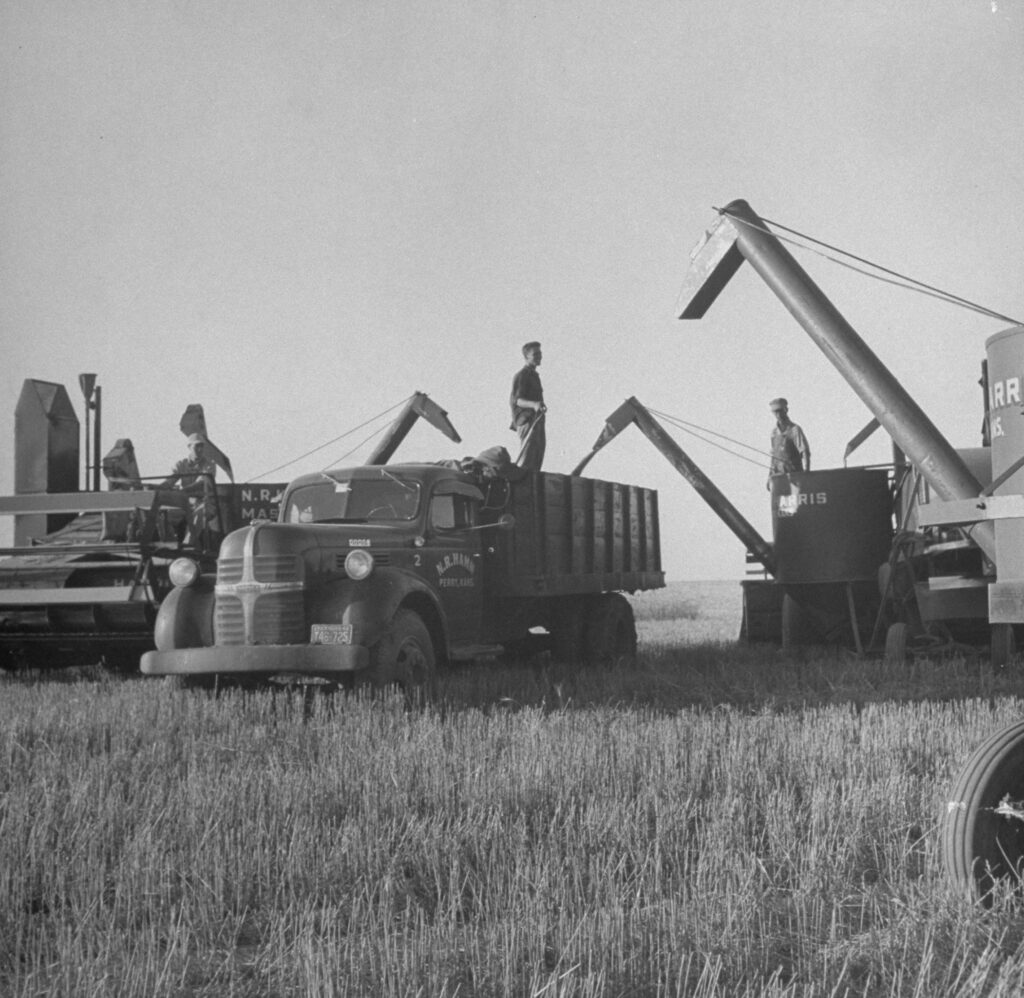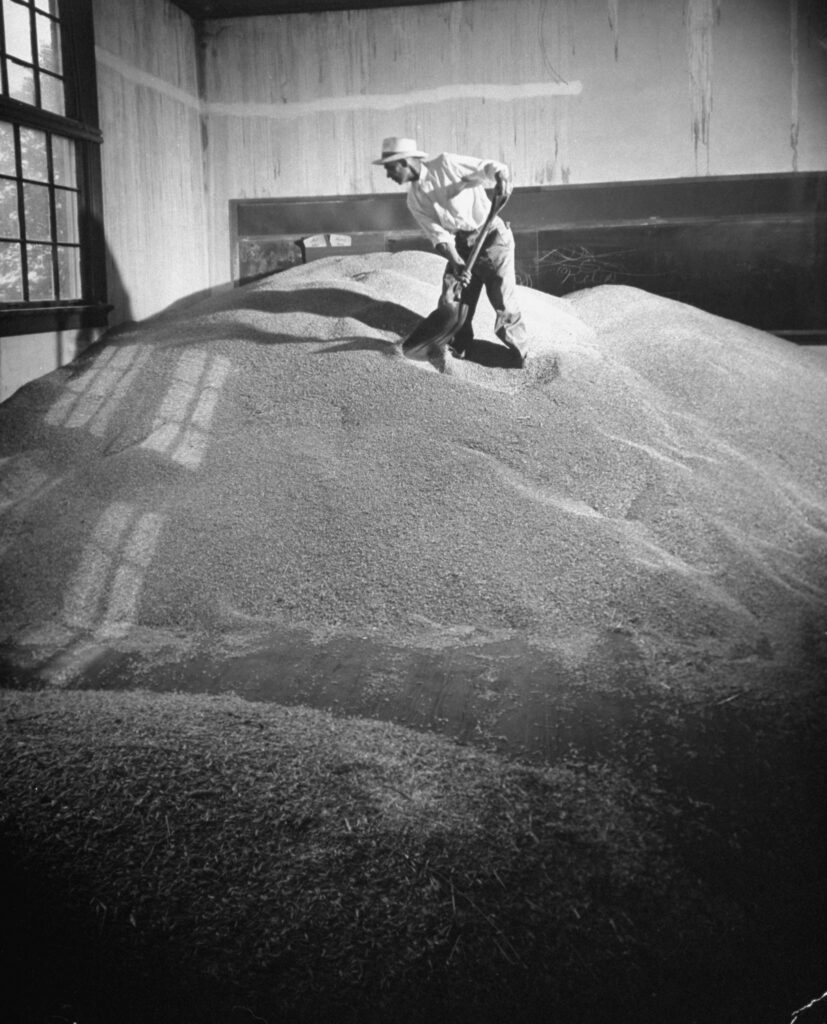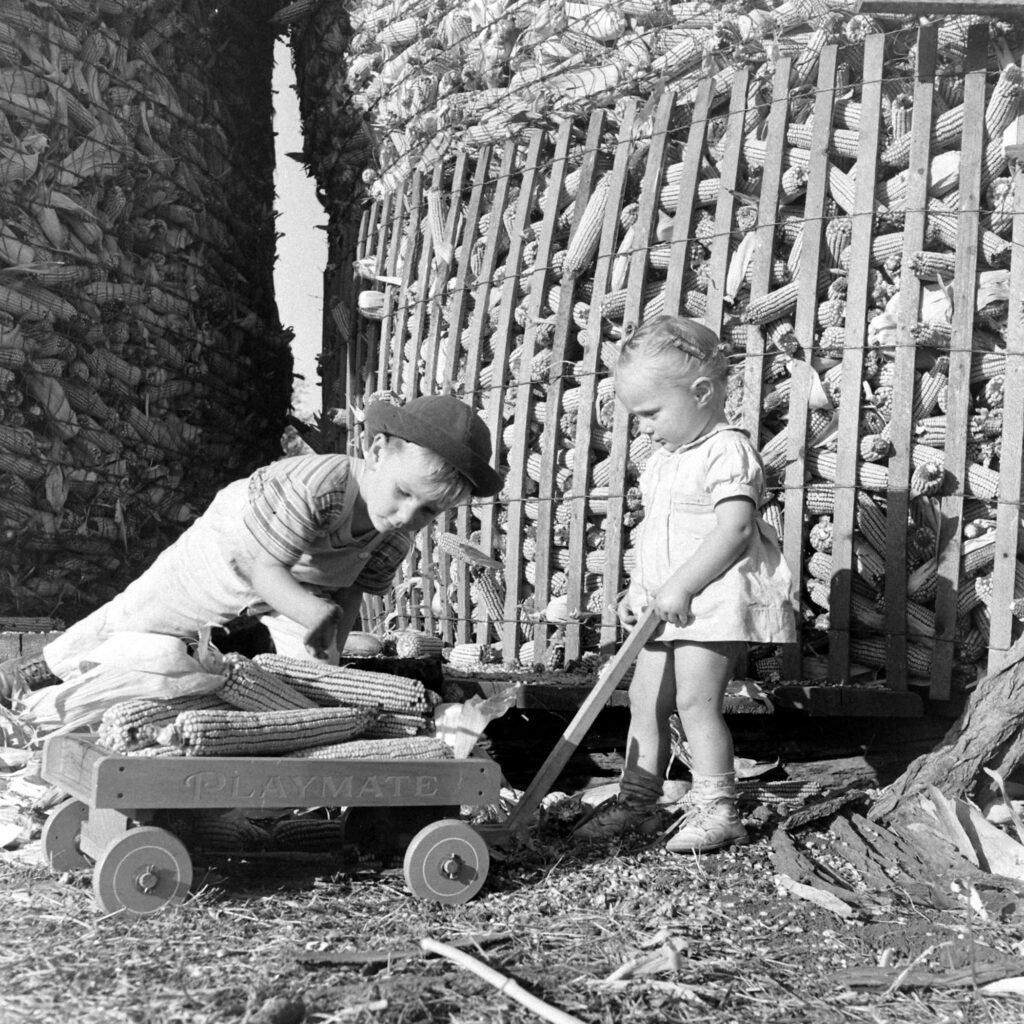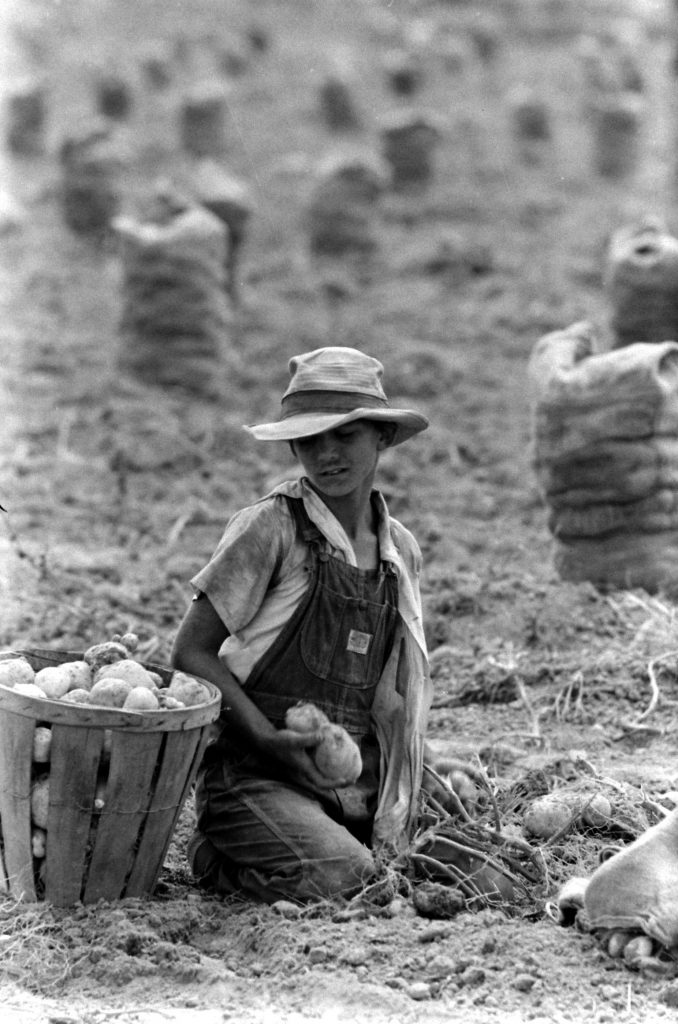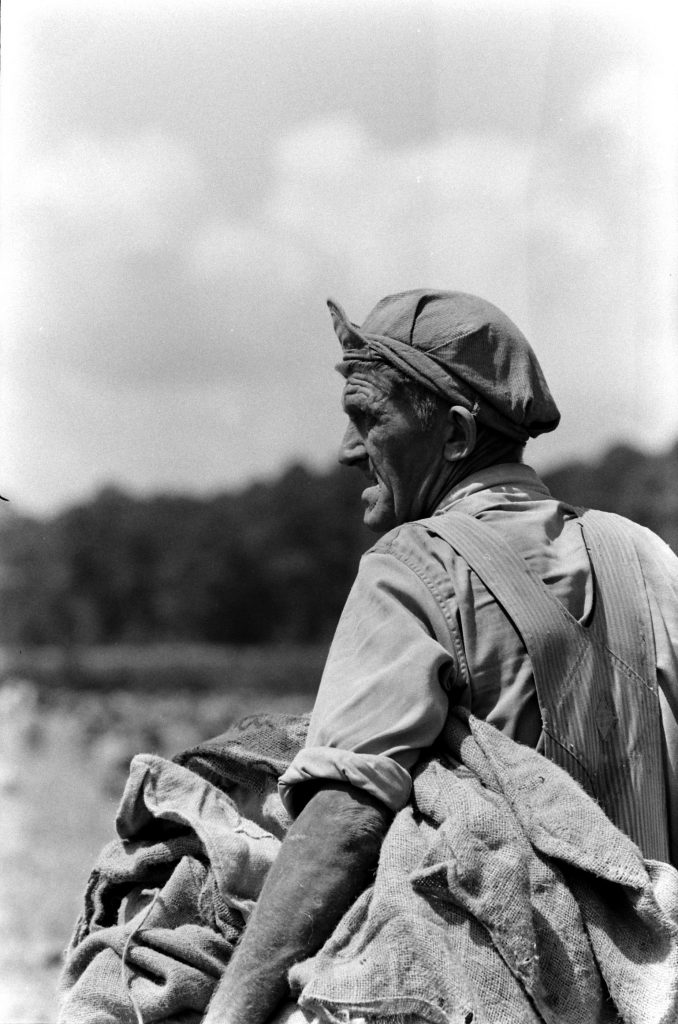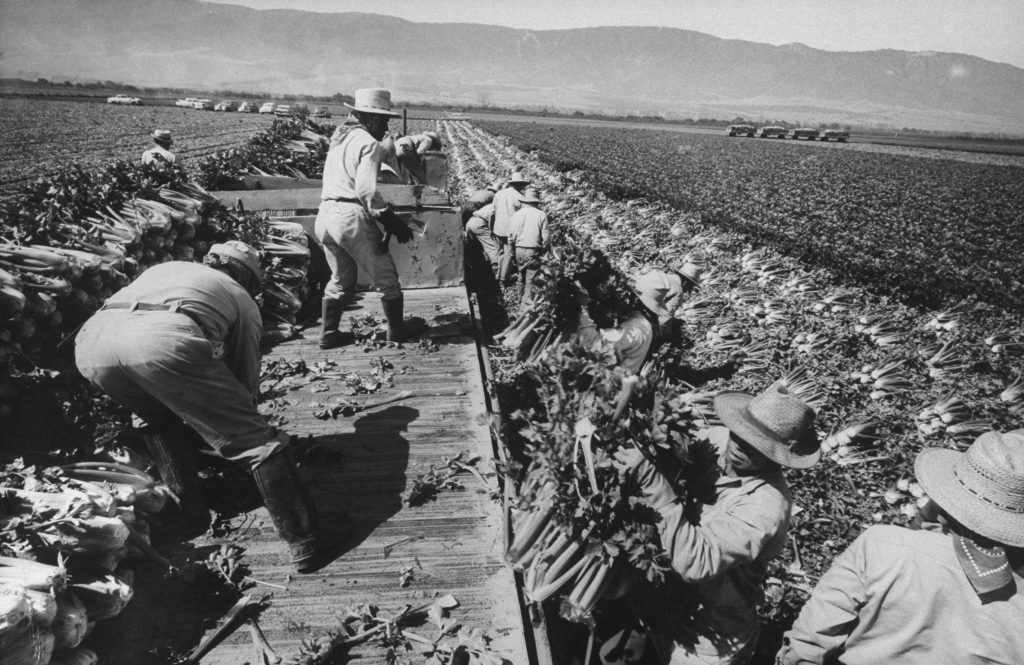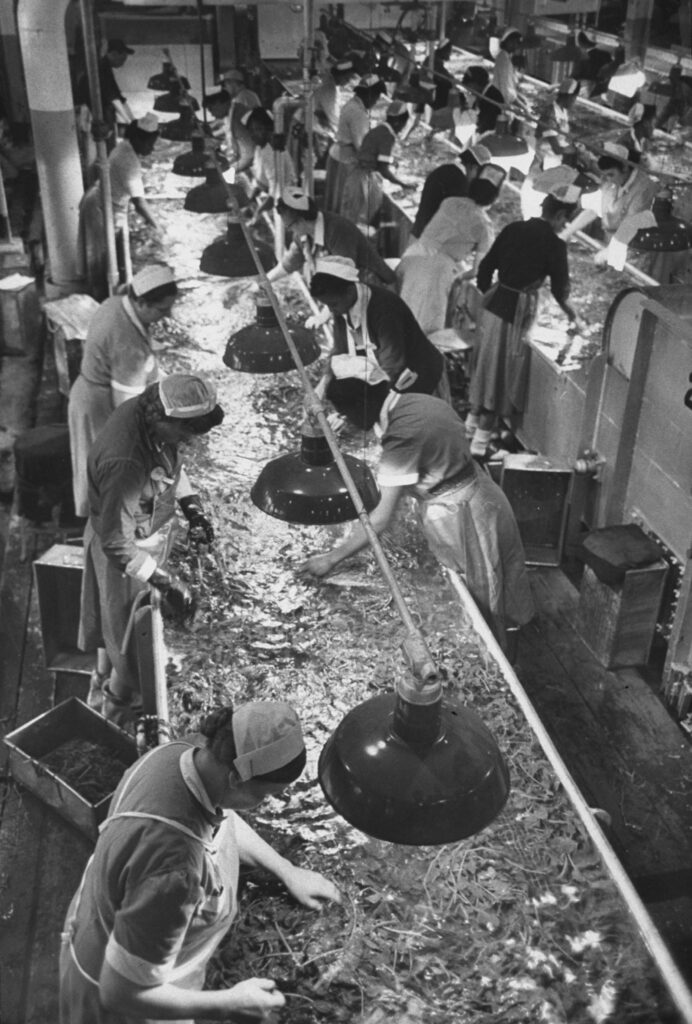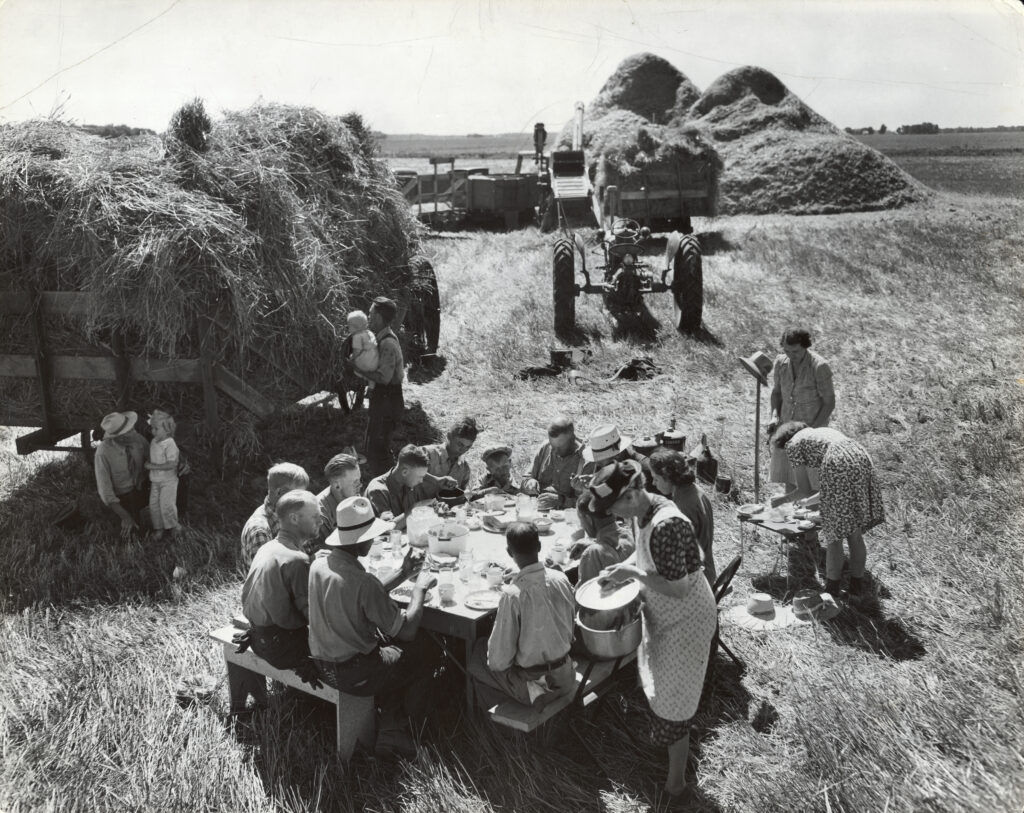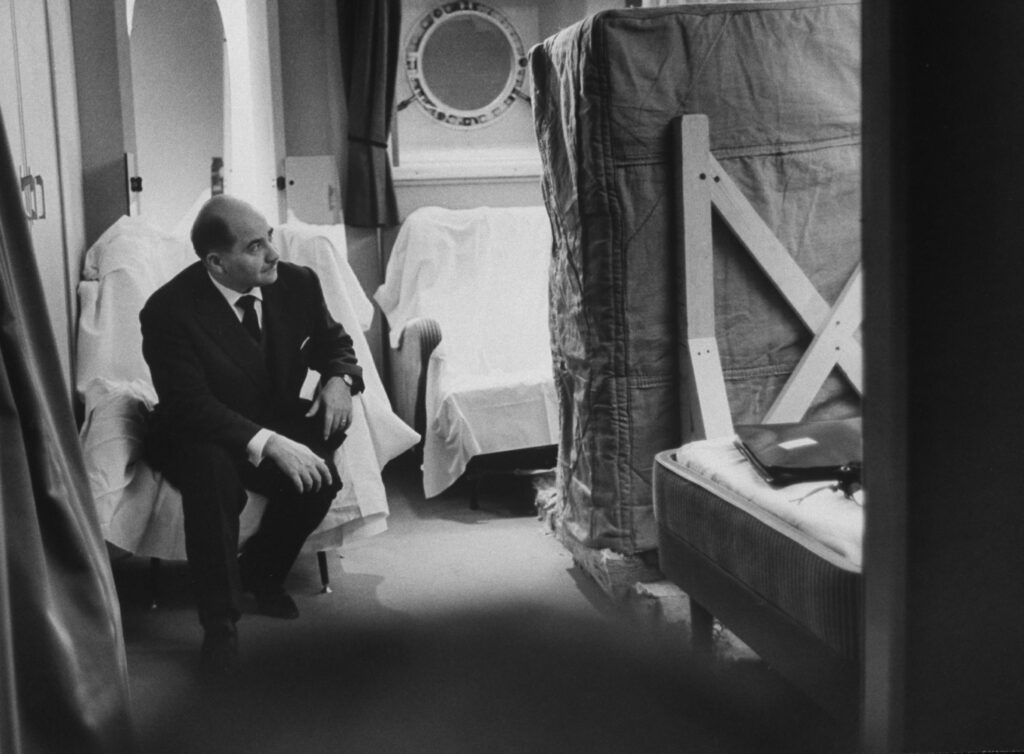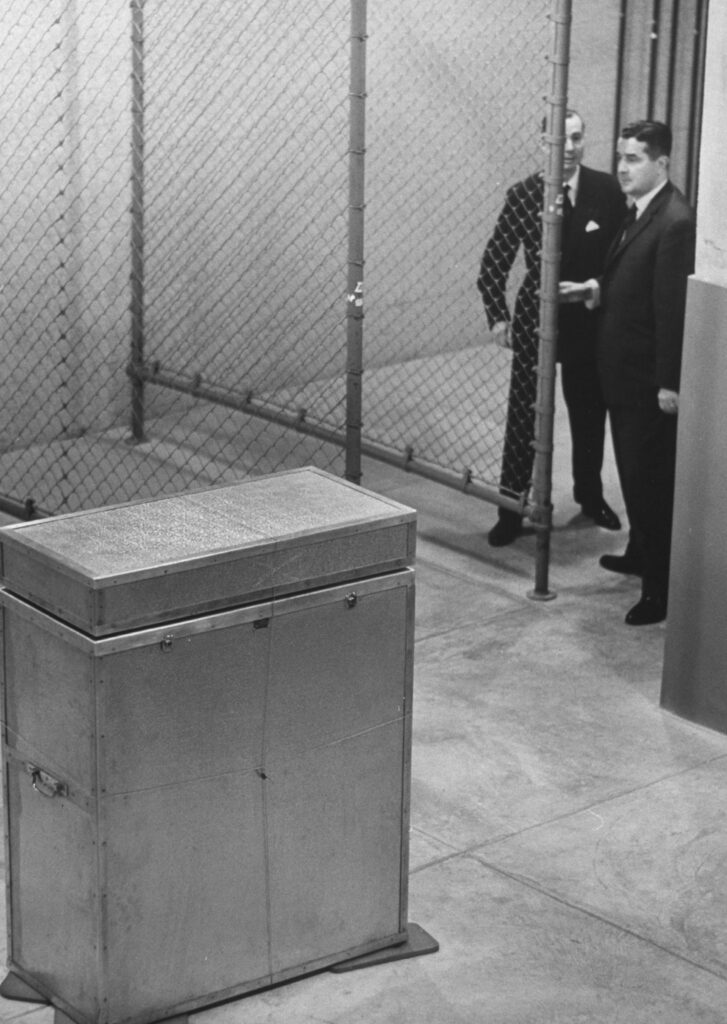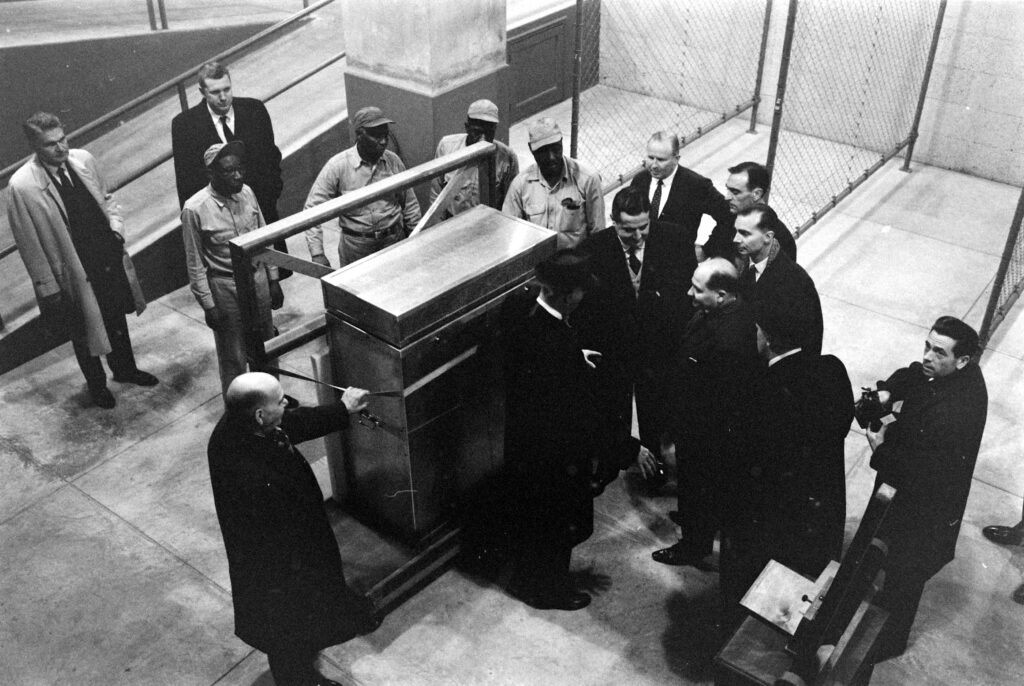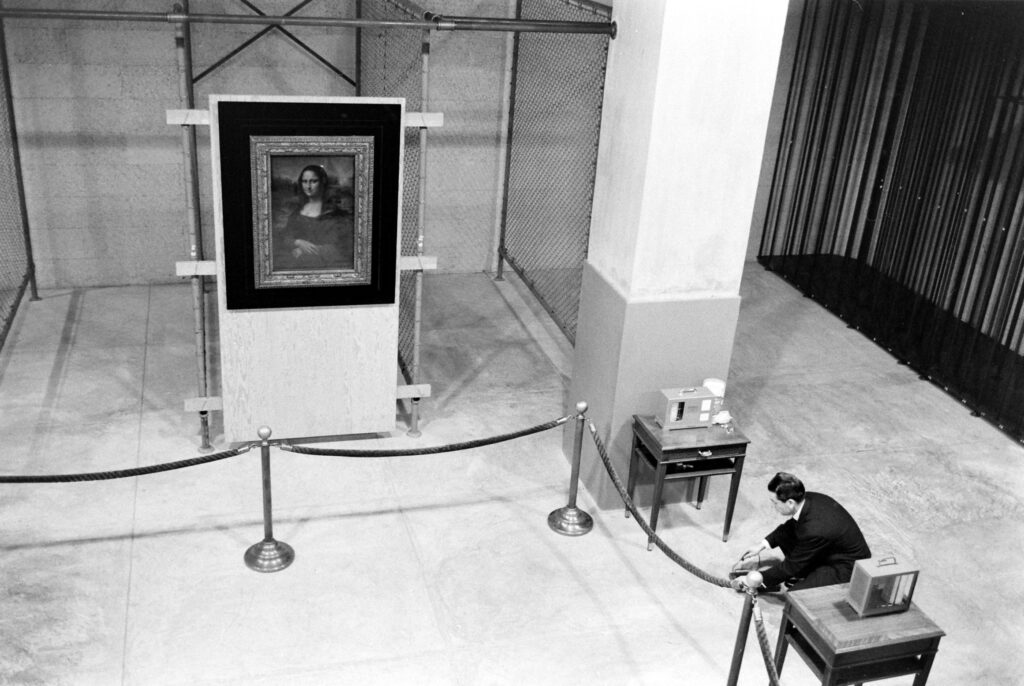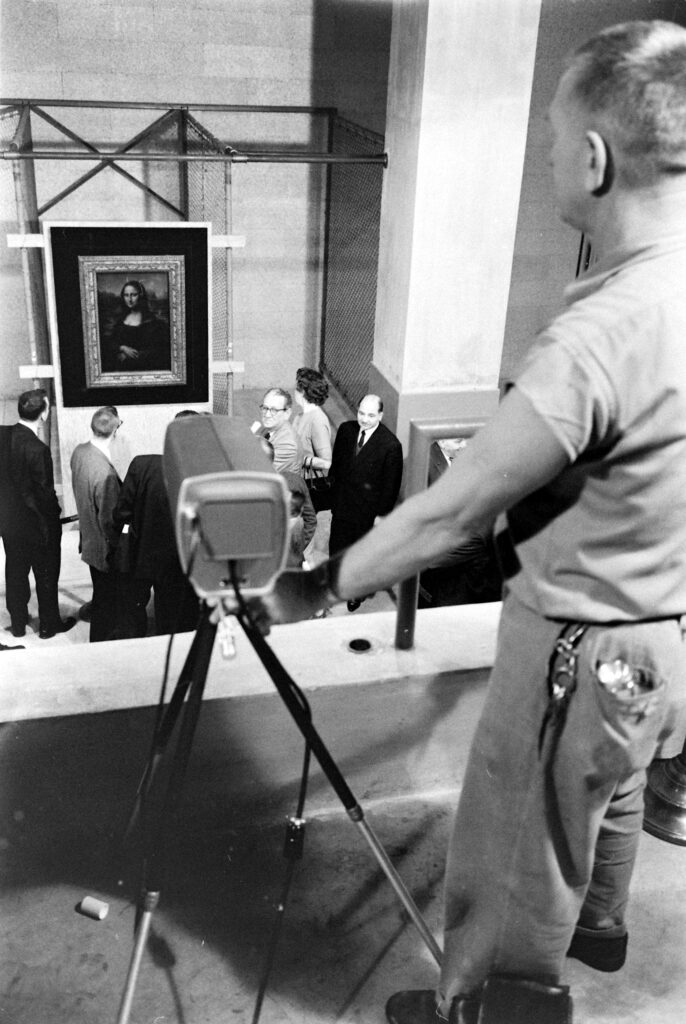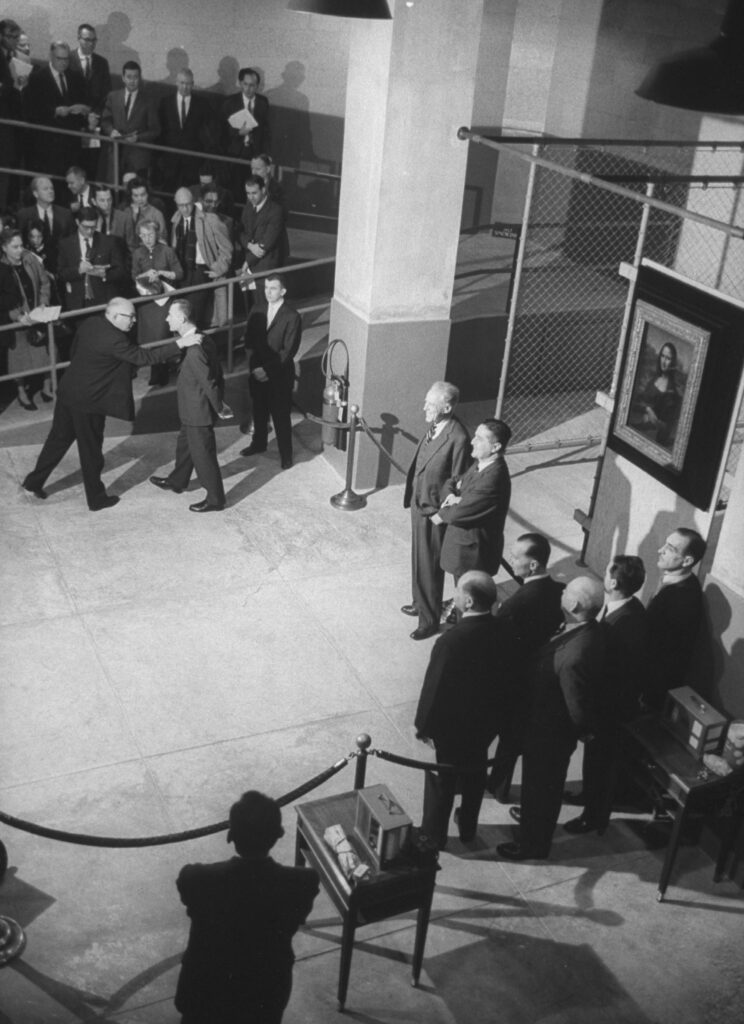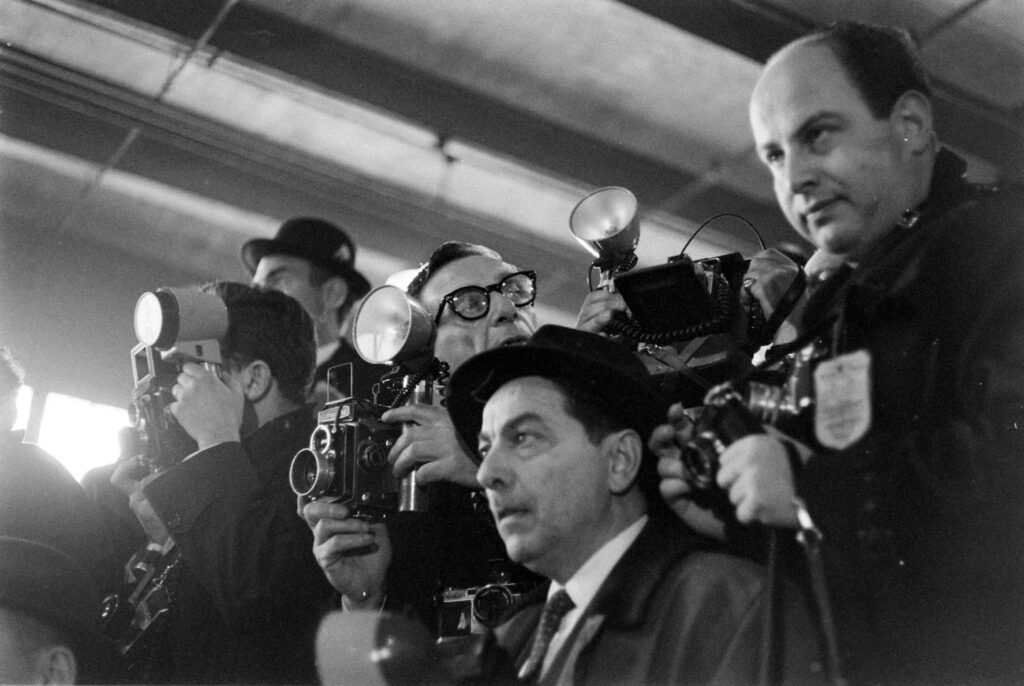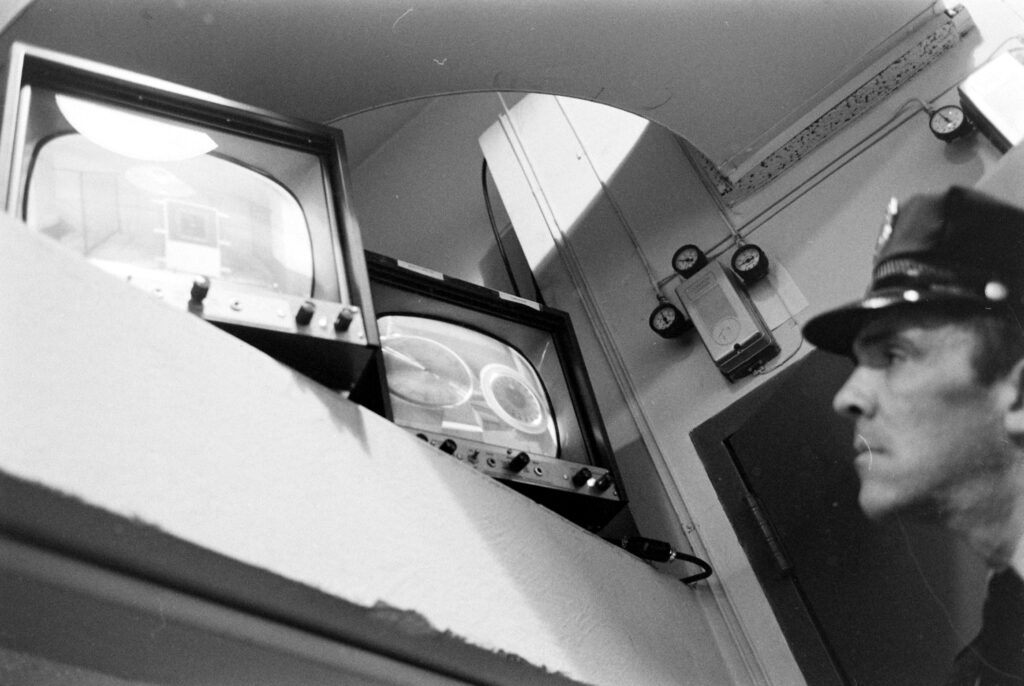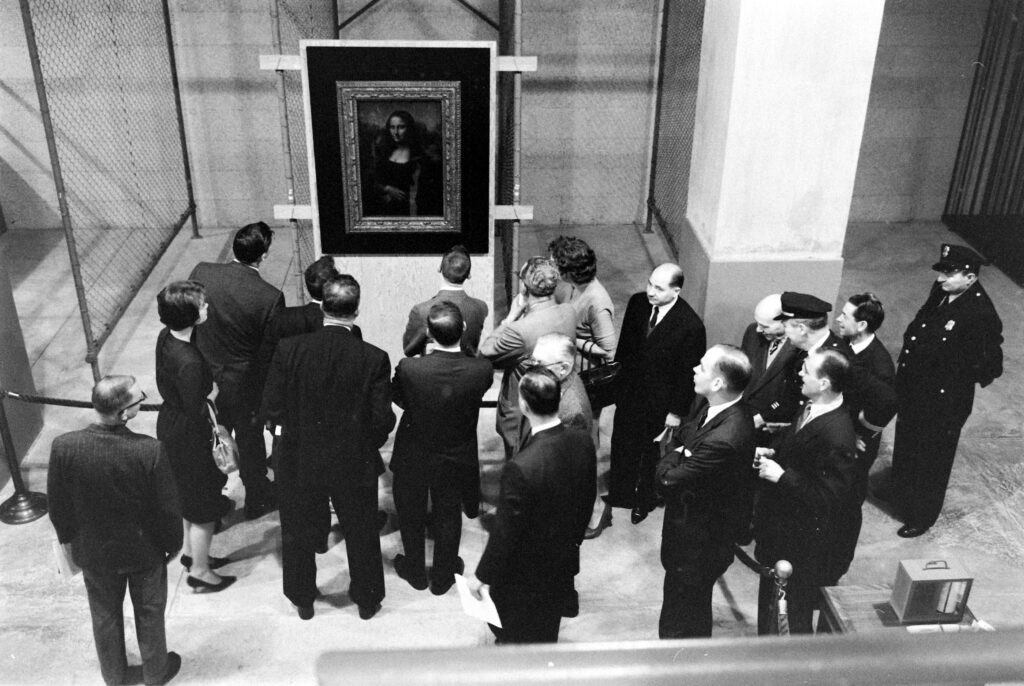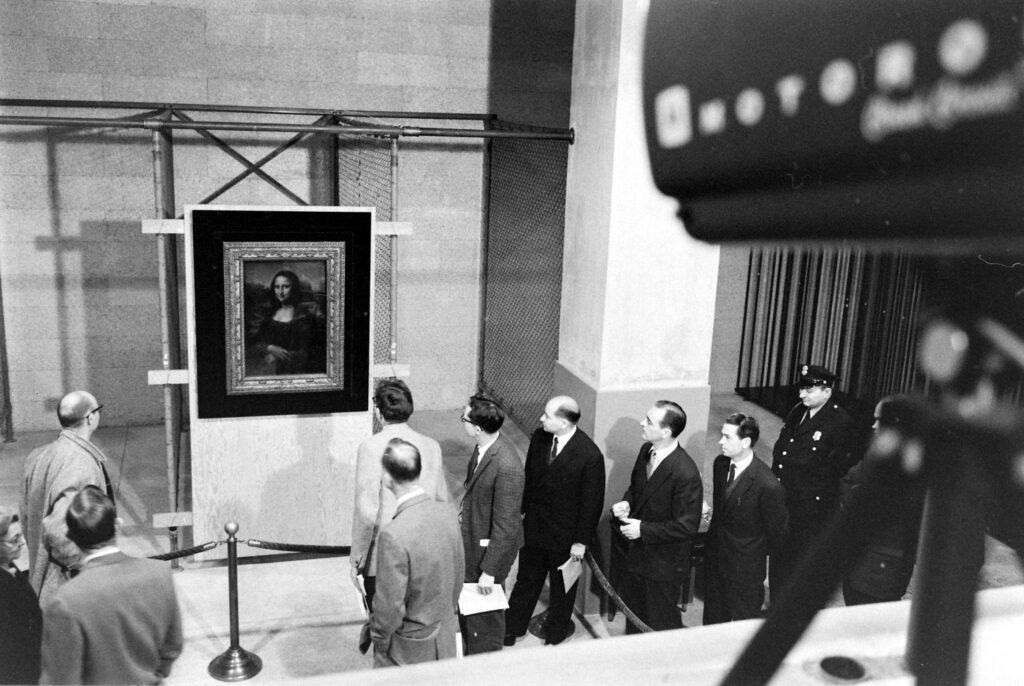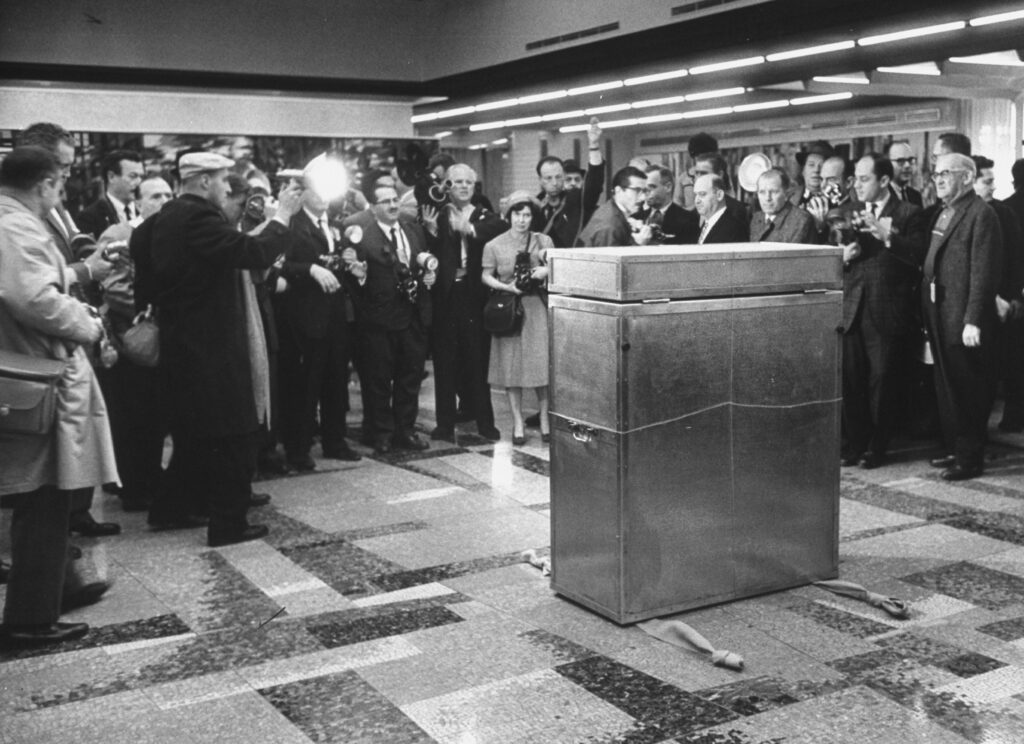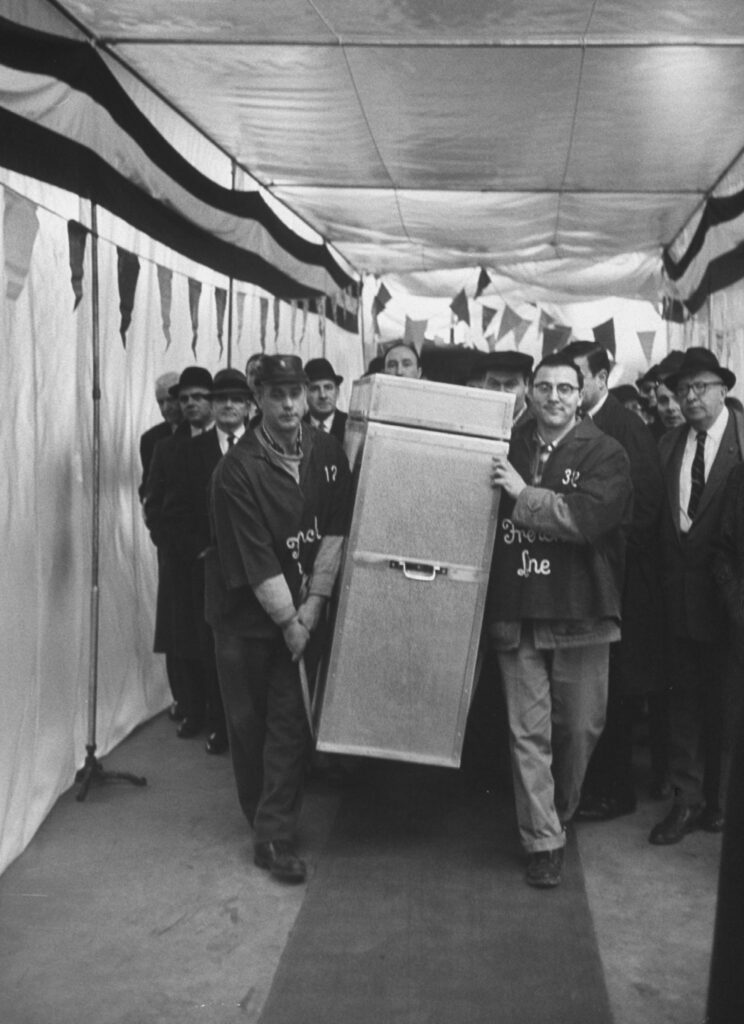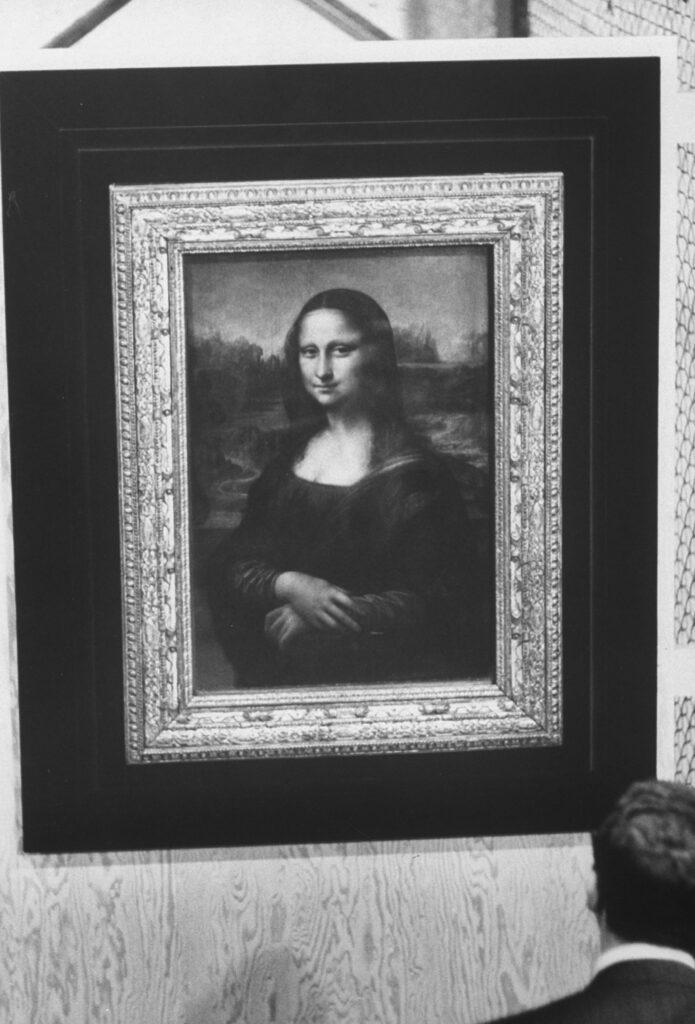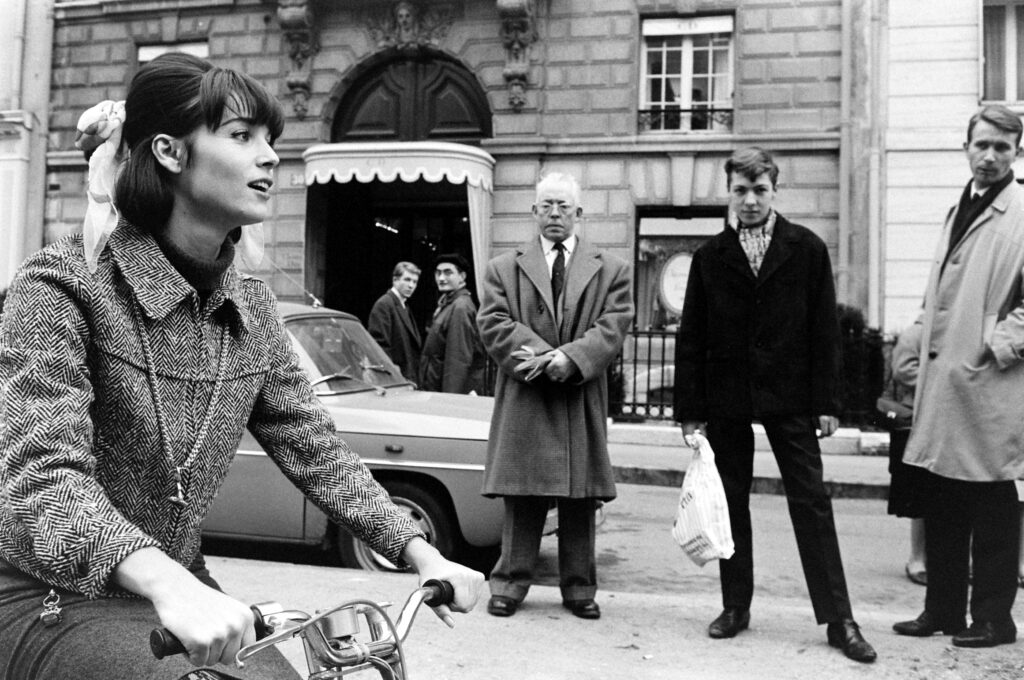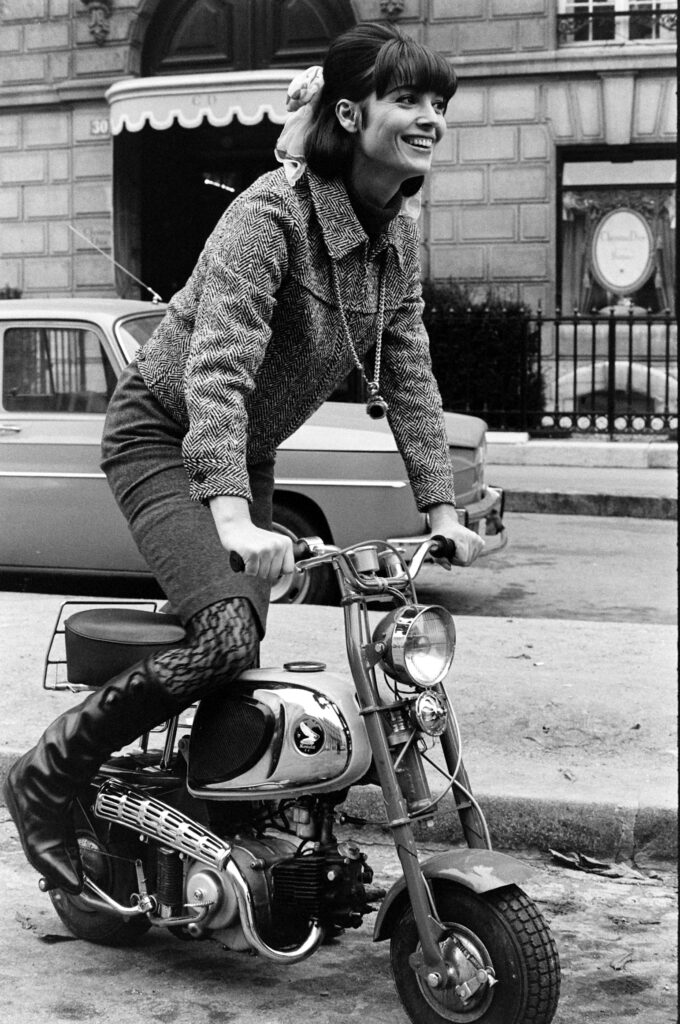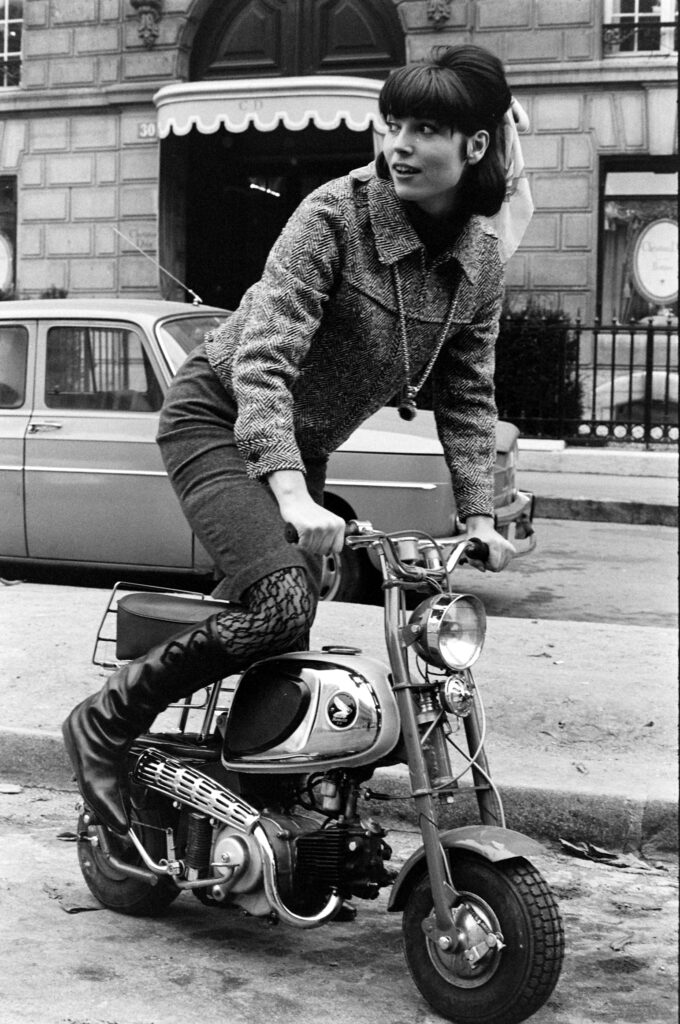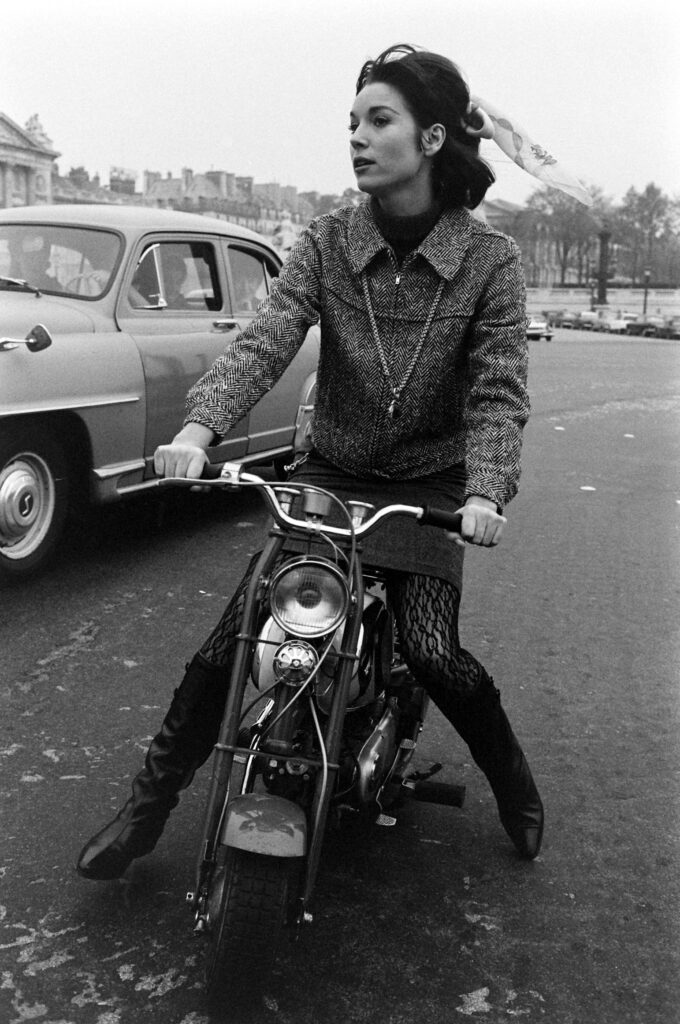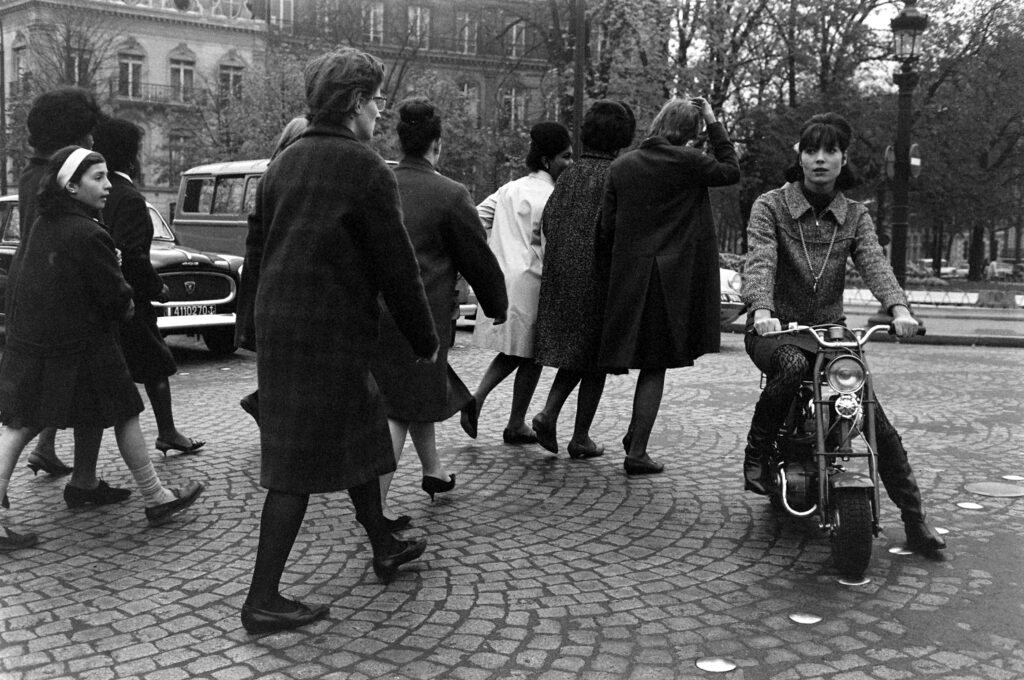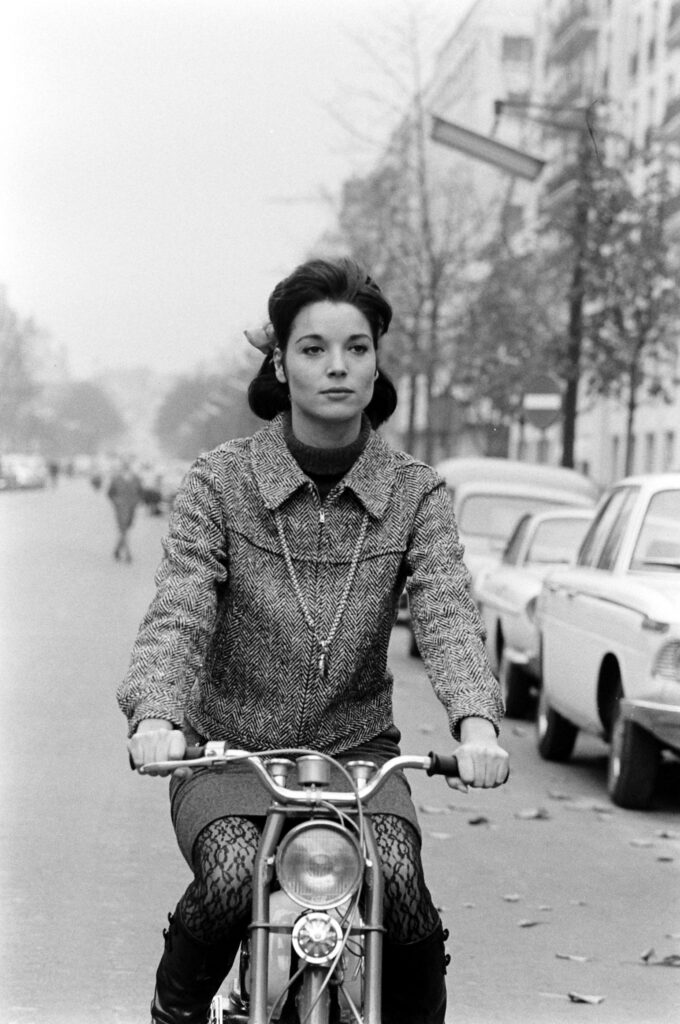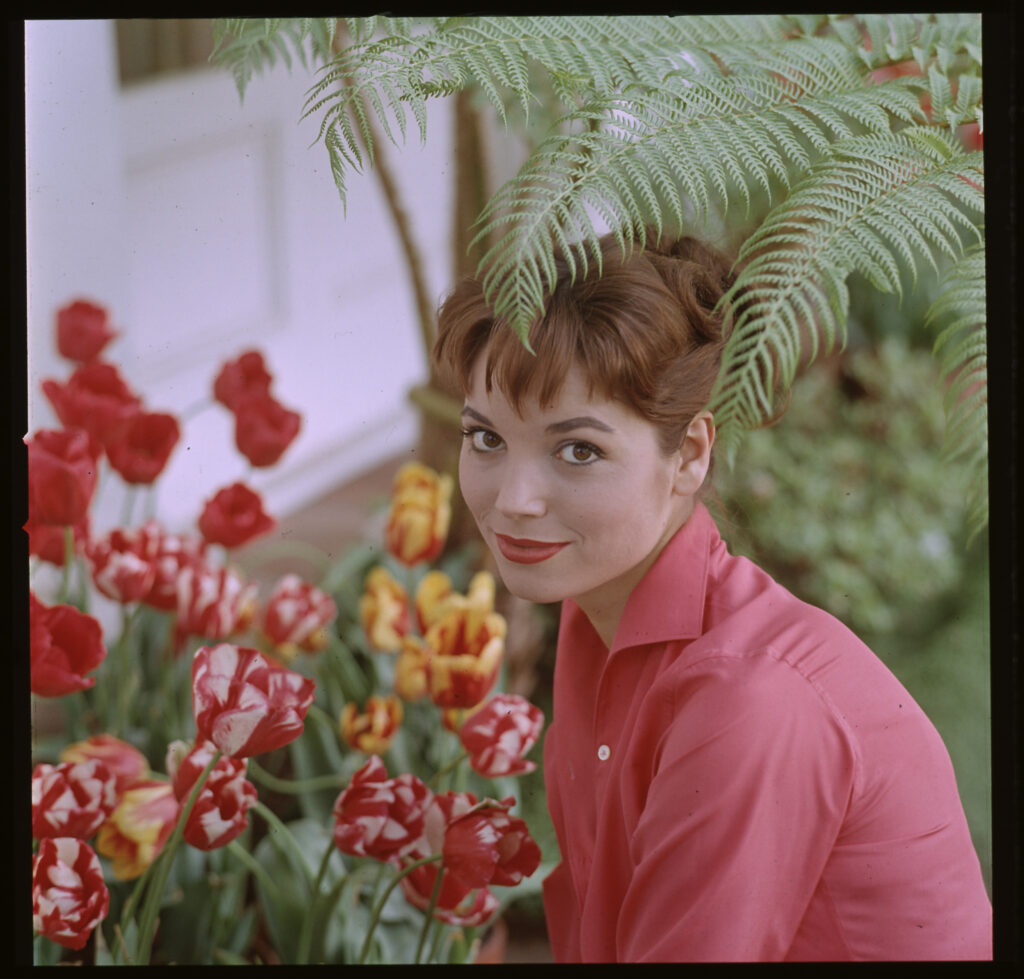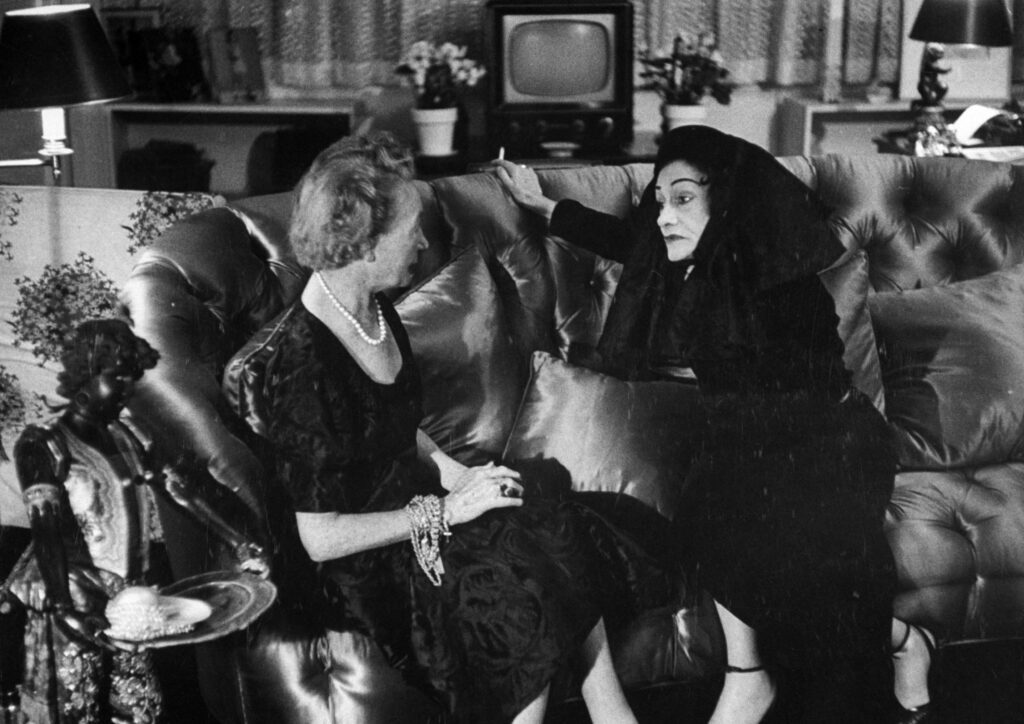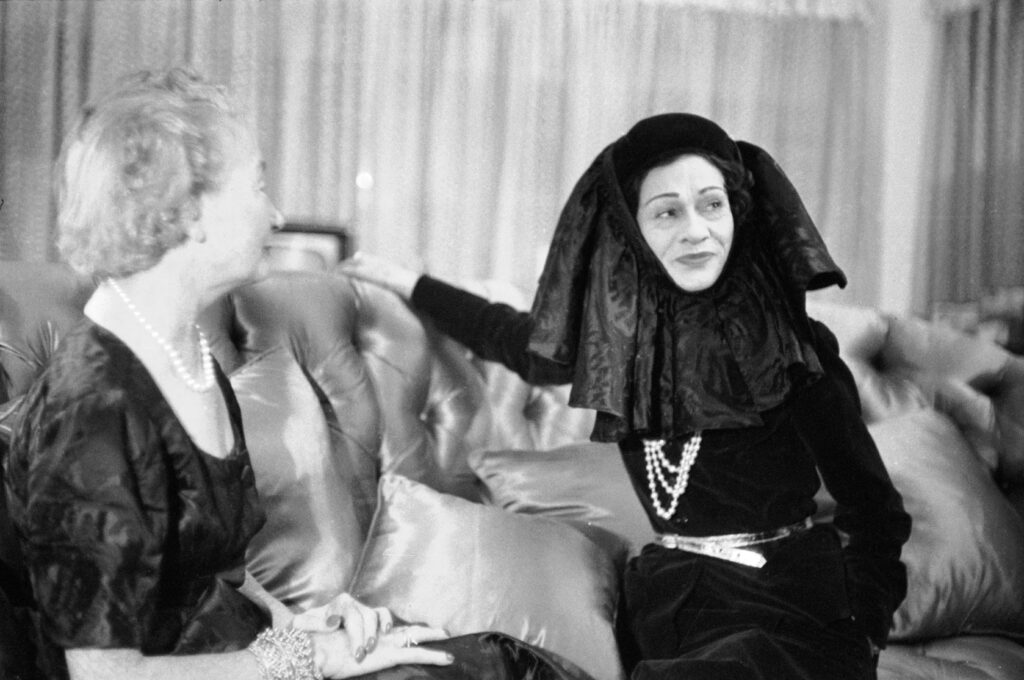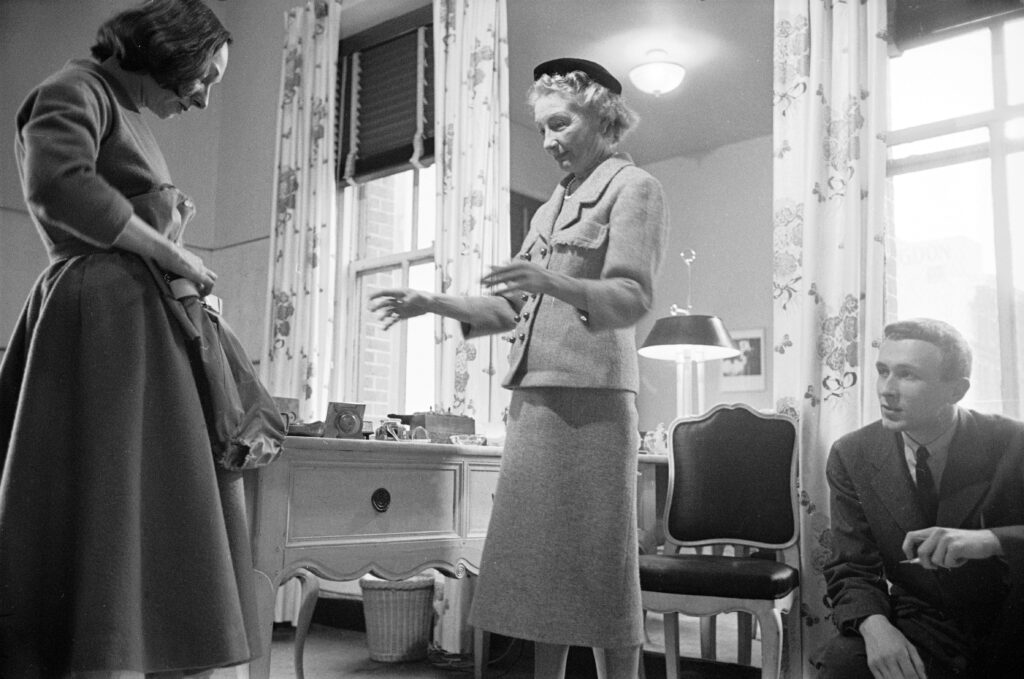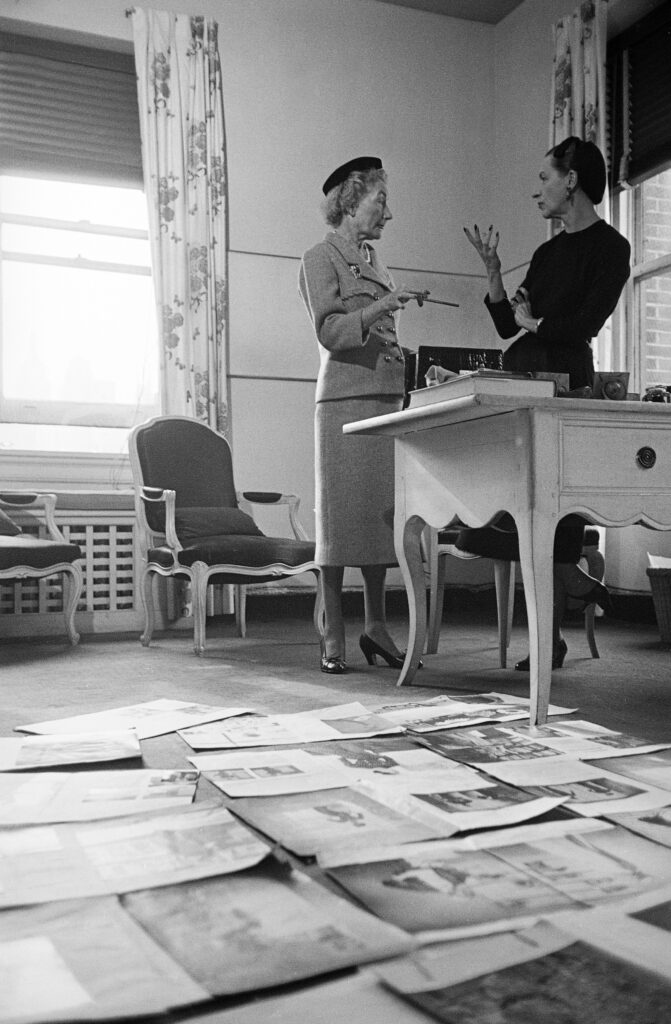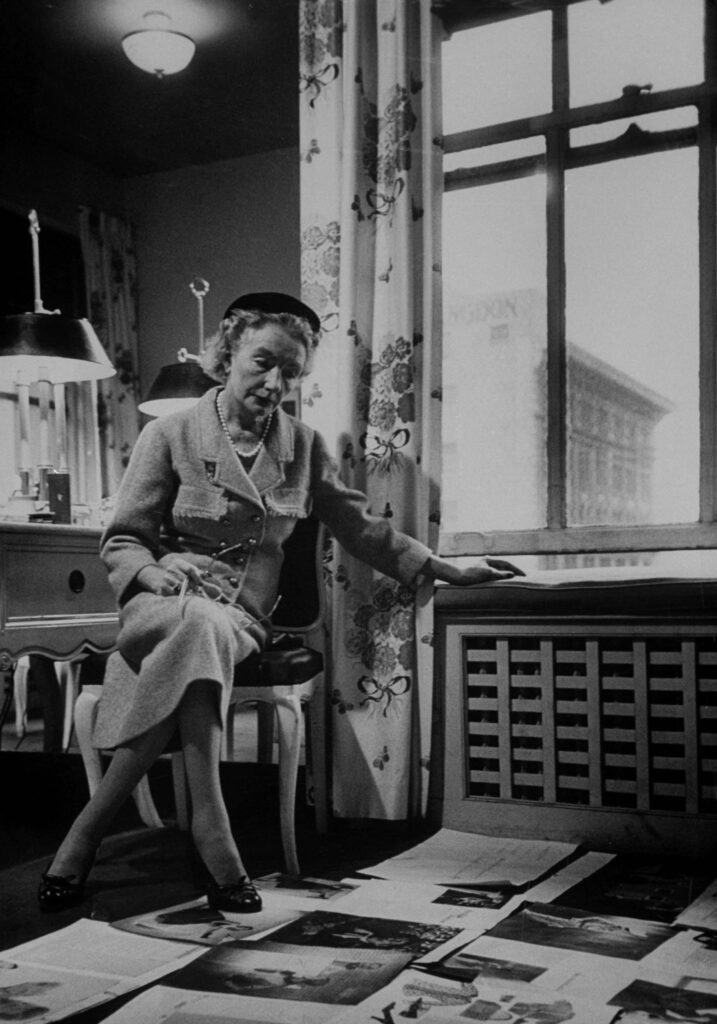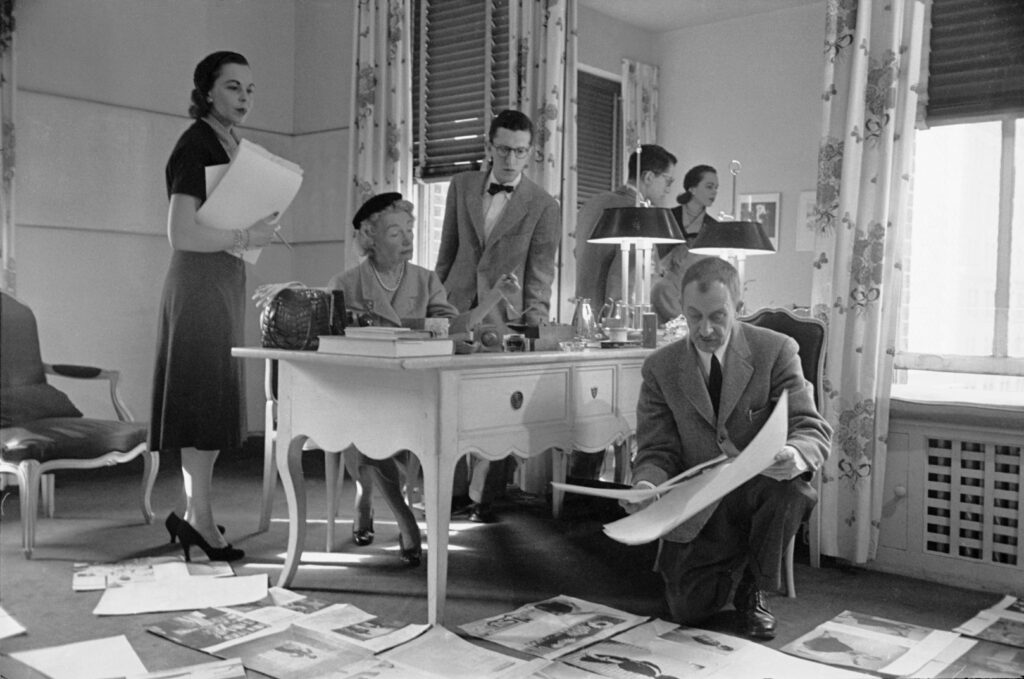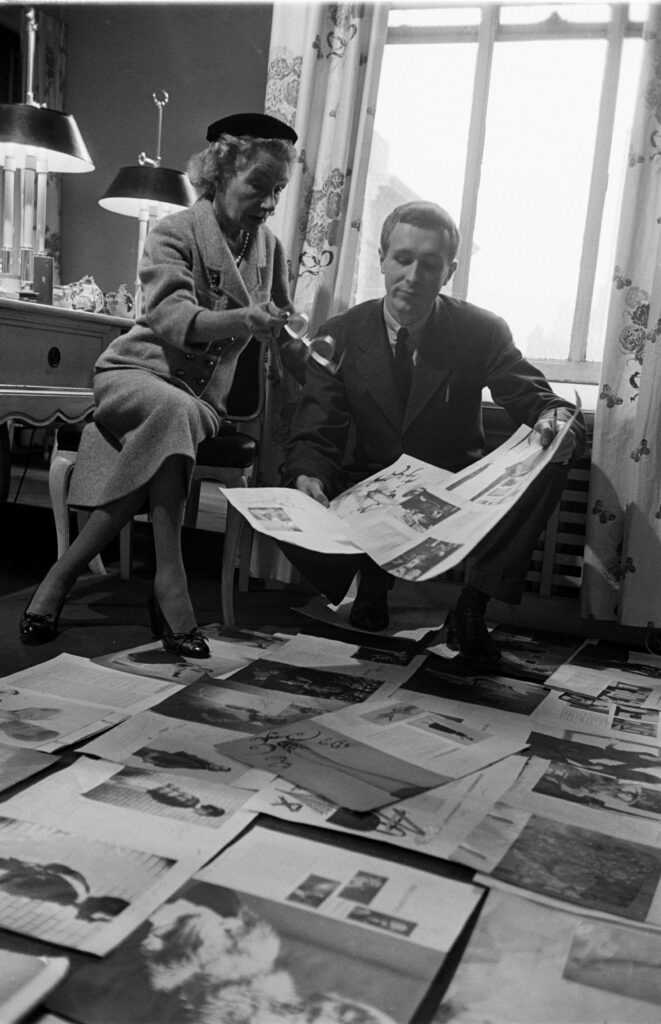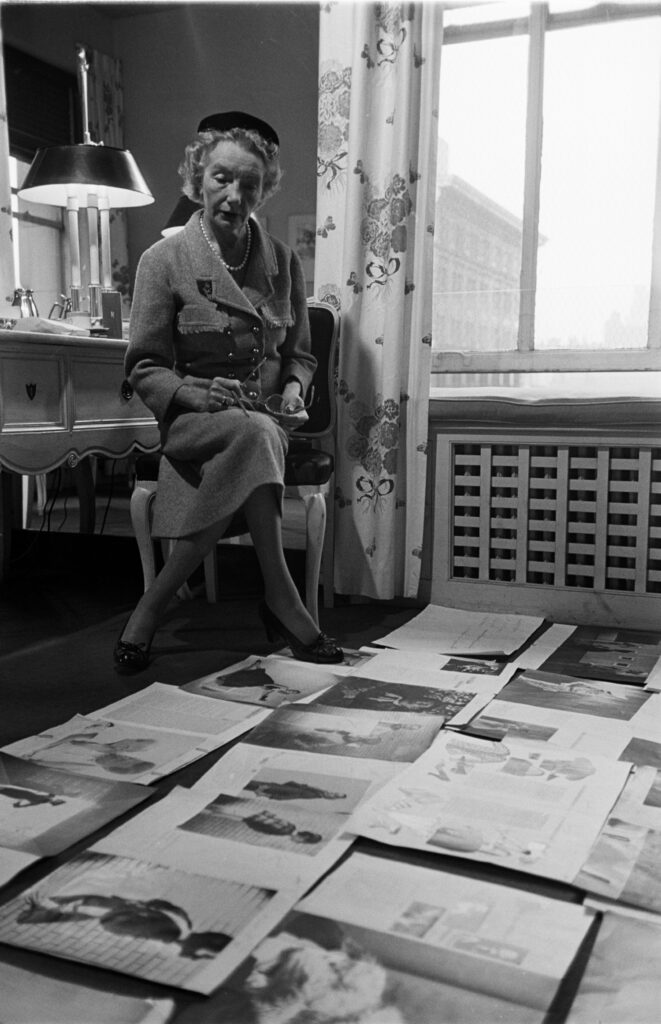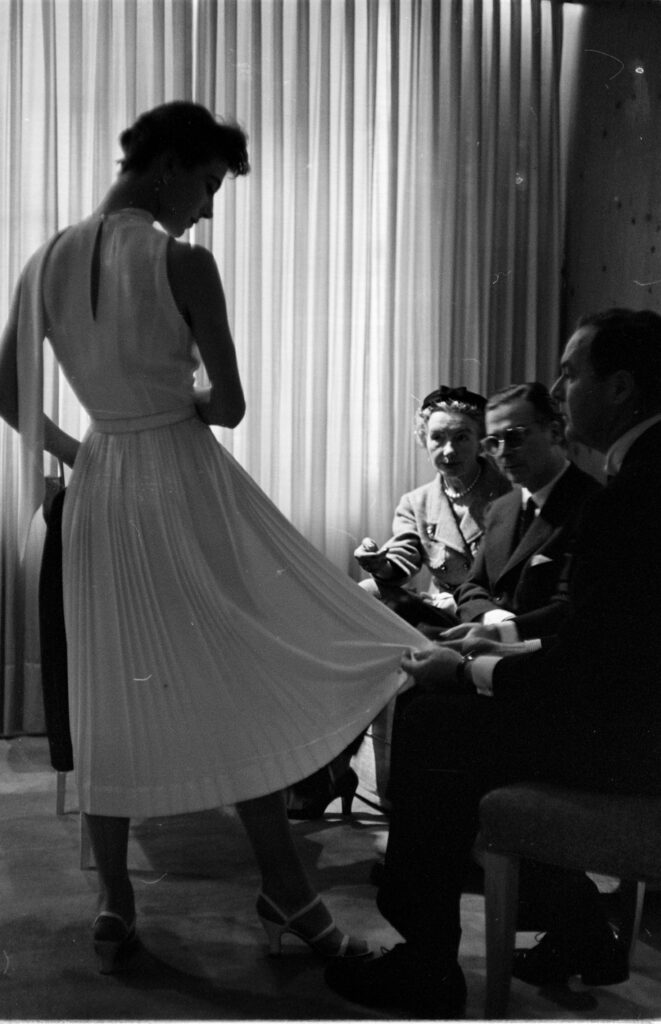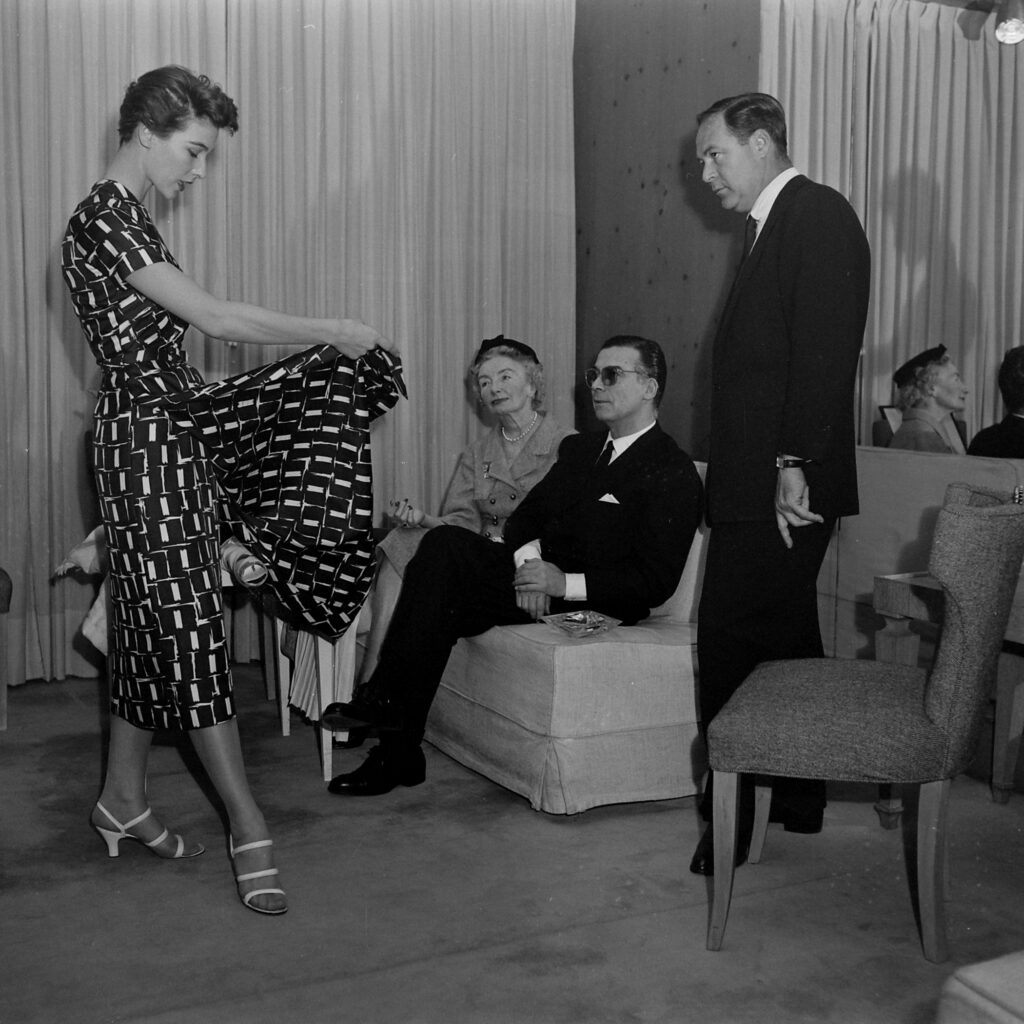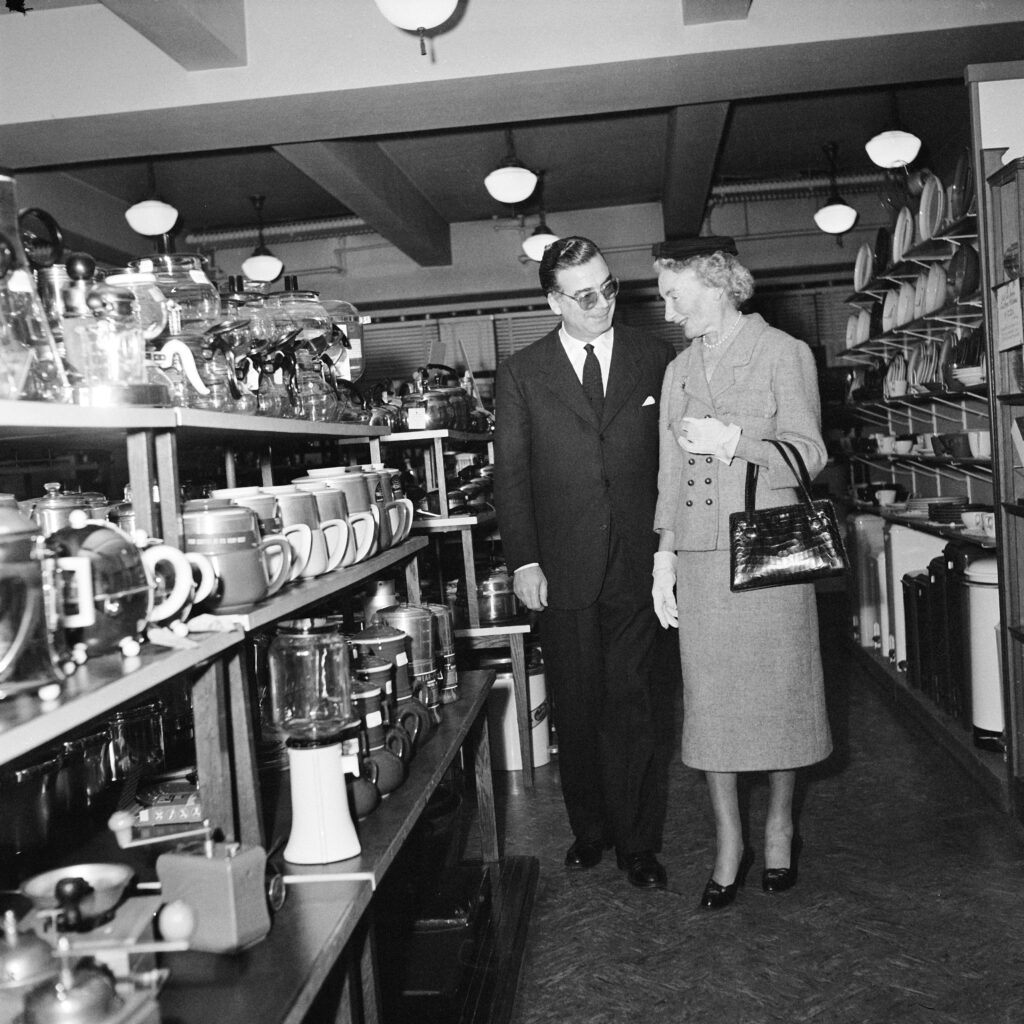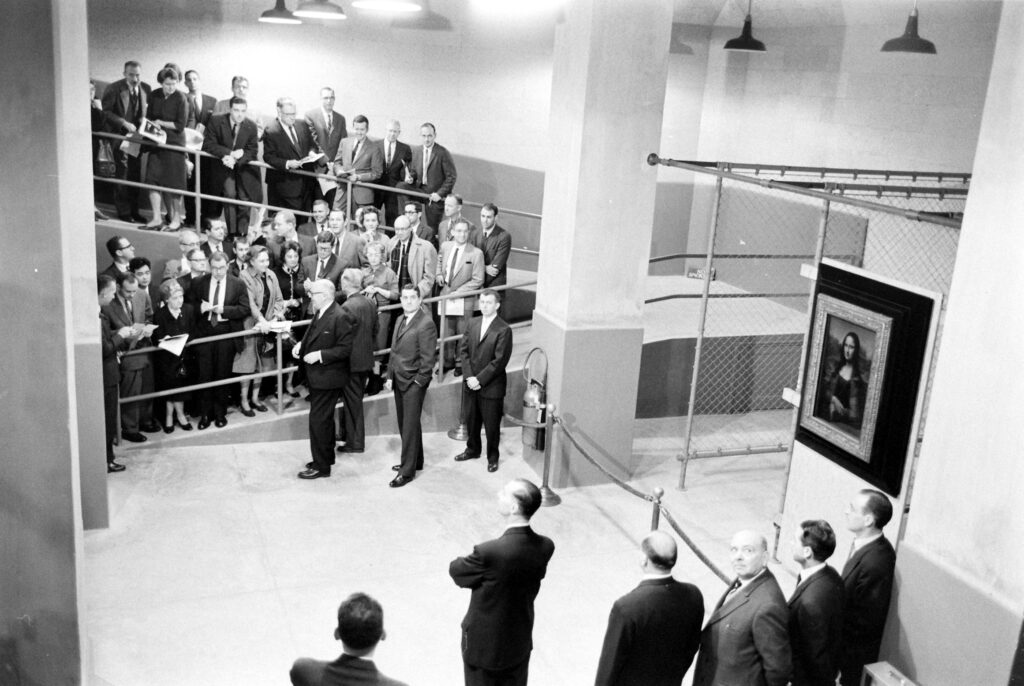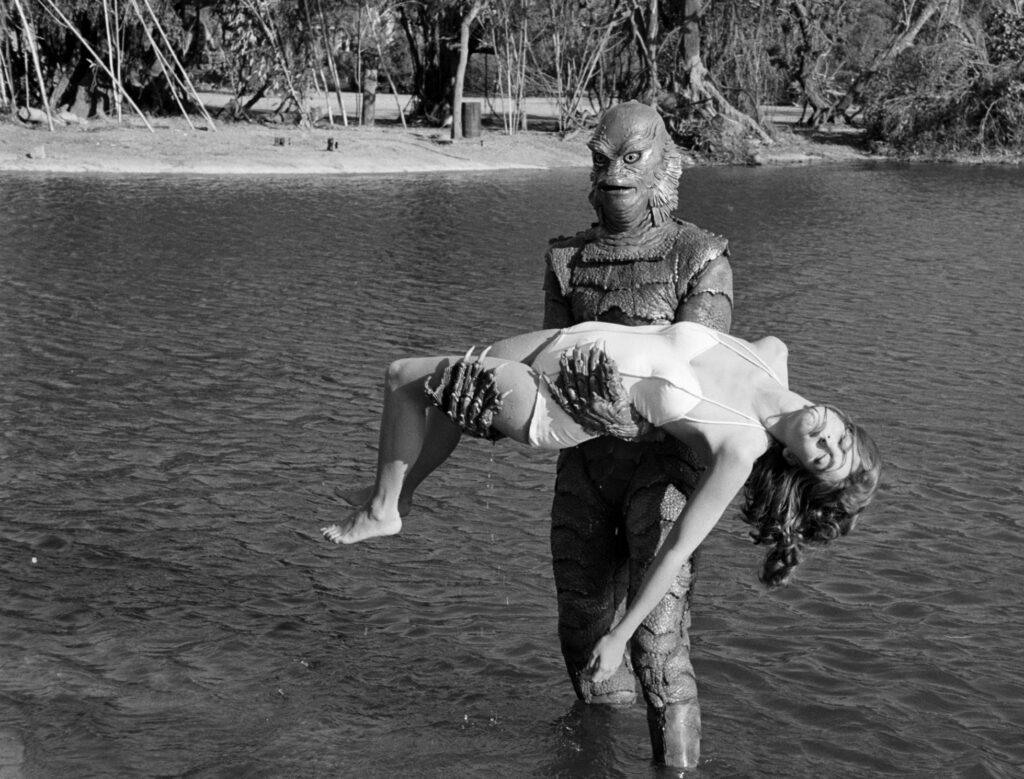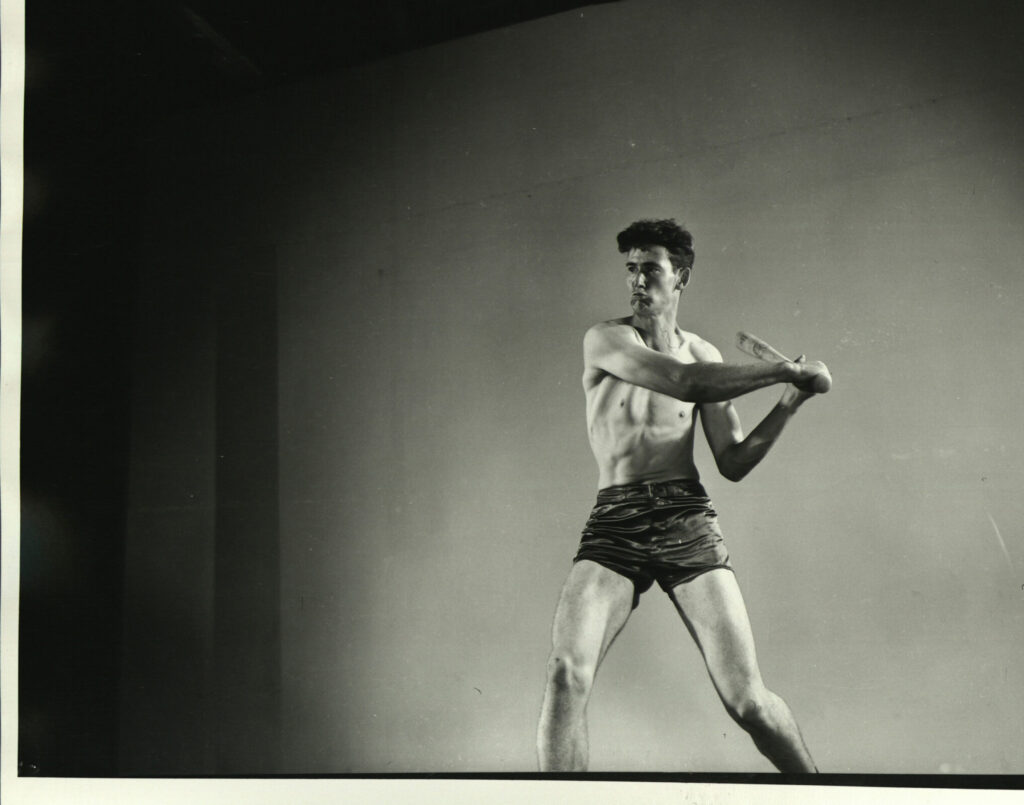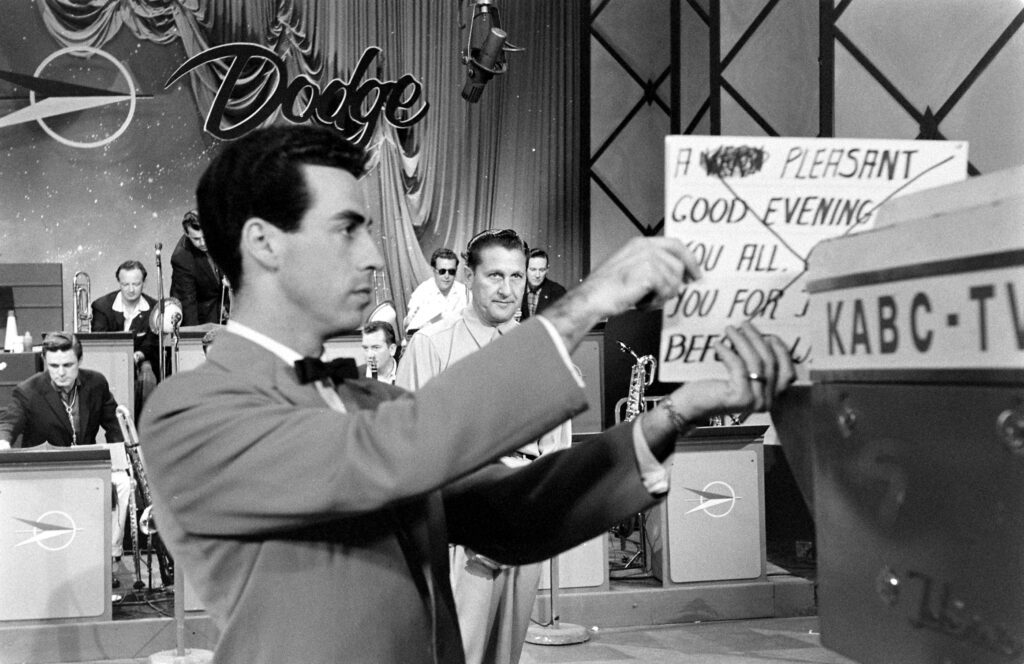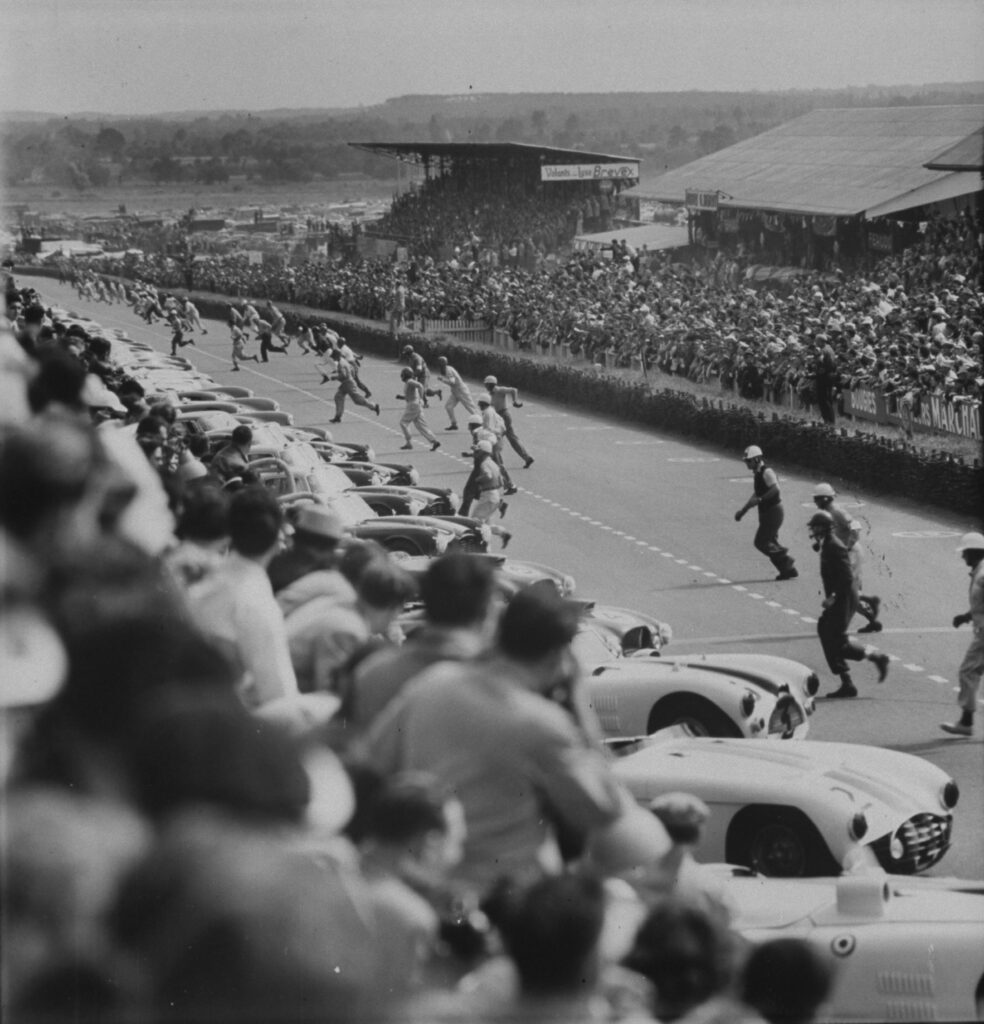Choosing shoes that go with your outfit is the subject of many online tutorials. In 1946, some clothes makers experimented with a novel approach to simplify the challenge. They sold shoes and dresses that were literally cut from the same cloth.
Here’s how LIFE explained it in an Oct. 1946 issue:
The newest looking shoes this year are made of bright fabrics. For shoemakers this is a risky innovation because gay shoes make a girl’s feet look bigger than they are, and the American girls’ feet are big enough already (most sold size, 7 1/2). But using fabrics makes it possible to turn out novel shoes which match other parts of an outfit. Besides, as shoemakers realize, bold shoes are a fine device for attracting attention to pretty legs.
The trend didn’t last, but it did serve as the inspiration for some eye-catching photos from LIFE staff photographer Nina Leen, an expert on making fashions jump off the page.
LIFE noted that manufacturers had been forced to make fabric shoes during World War II because of rationing that limited the supplies of leather (and also rubber). But during those war years manufacturers used dark-colored cloth so as not to draw attention to it. In 1946 some manufacturers switched gears and decided to the highlight the presence of cloth by using bright patterned fabric. LIFE said that this approach gave outfits a “startling footnote.”
P.S Speaking of footnotes, the 1946 story’s comment about the size of women’s feet is not only odd but also outdated. These days women’s feet are actually much bigger, with the average size now up to 8 1/2. The most likely explanation: changes in the American diet.

From a 1946 story on shoes and outfits made from the same fabric.
Nina Leen/Life Picture Collection/Shutterstock

From a 1946 story on shoes and outfits made from the same fabric.
Nina Leen/Life Picture Collection/Shutterstock

From a 1946 story on shoes and outfits made from the same fabric.
Nina Leen/Life Picture Collection/Shutterstock

From a 1946 story on shoes and outfits made from the same fabric.
Nina Leen/Life Picture Collection/Shutterstock

From a 1946 story on shoes and outfits made from the same fabric.
Nina Leen/Life Picture Collection/Shutterstock

From a 1946 story on shoes and outfits made from the same fabric.
Nina Leen/Life Picture Collection/Shutterstock

From a 1946 story on shoes and outfits made from the same fabric.
Nina Leen/Life Picture Collection/Shutterstock

From a 1946 story on shoes and outfits made from the same fabric.
Nina Leen/Life Picture Collection/Shutterstock

From a 1946 story on shoes and outfits made from the same fabric.
Nina Leen/Life Picture Collection/Shutterstock

From a 1946 story on shoes and outfits made from the same fabric.
Nina Leen/Life Picture Collection/Shutterstock

From a 1946 story on shoes and outfits made from the same fabric.
Nina Leen/Life Picture Collection/Shutterstock

From a 1946 story on shoes and outfits made from the same fabric.
Nina Leen/Life Picture Collection/Shutterstock
